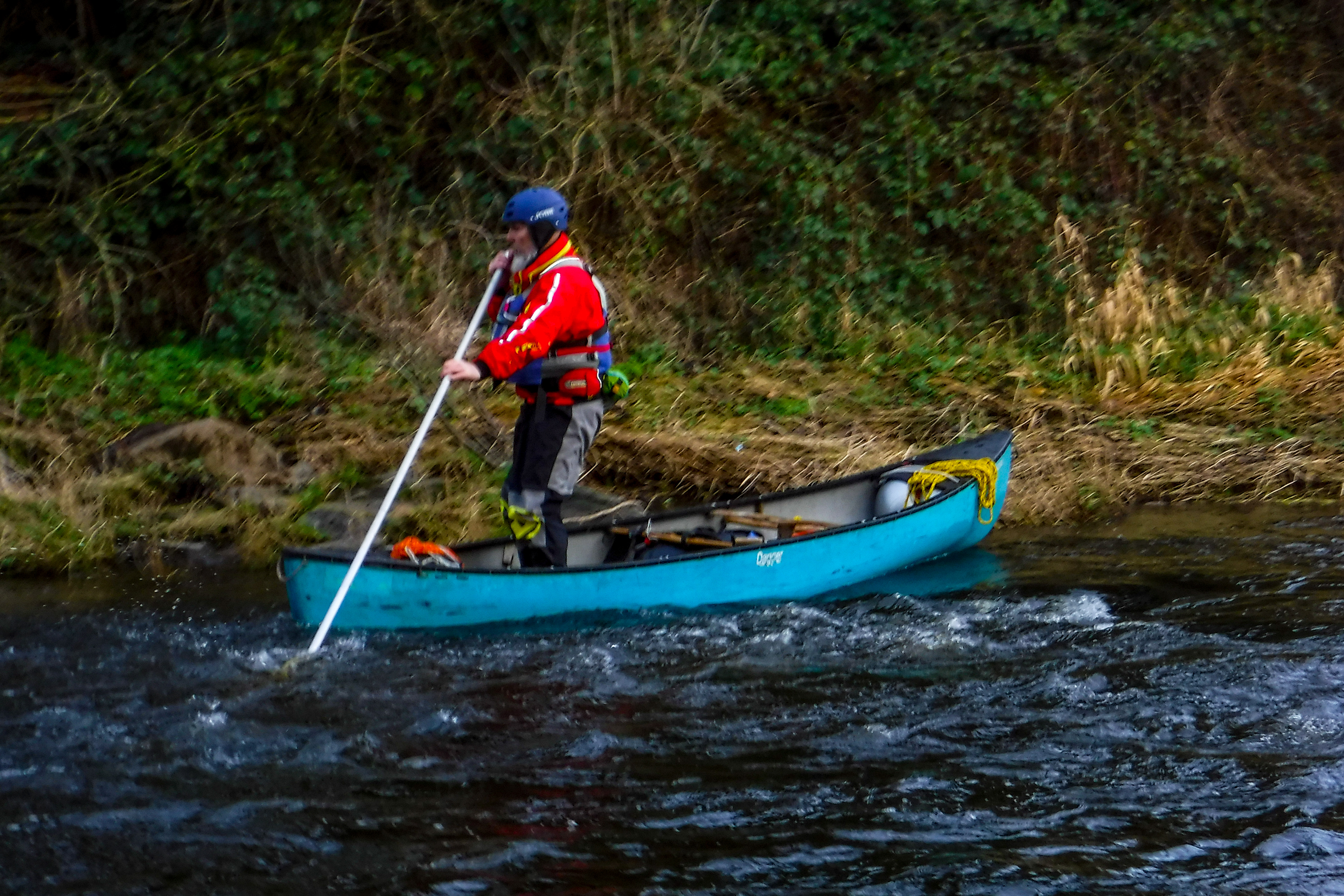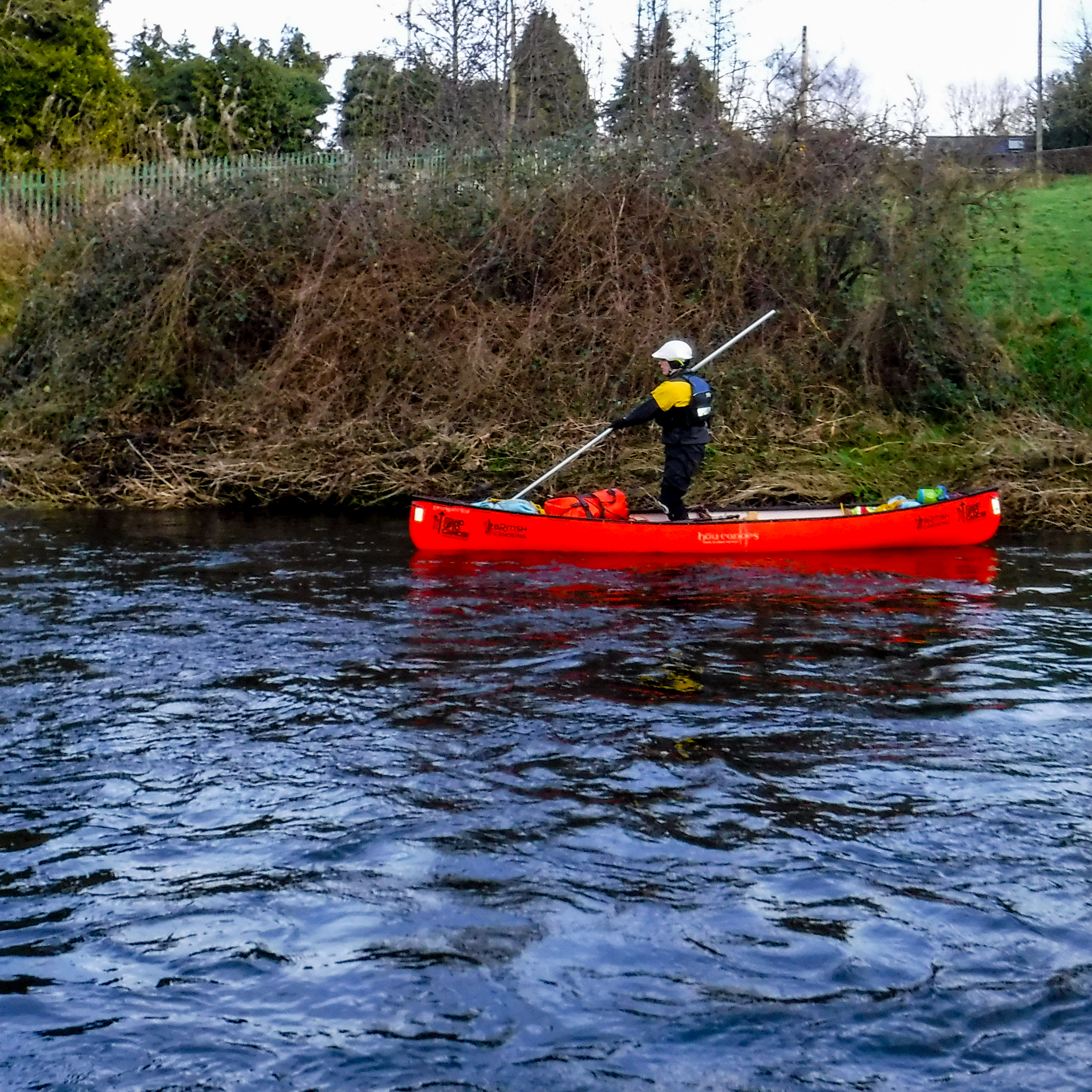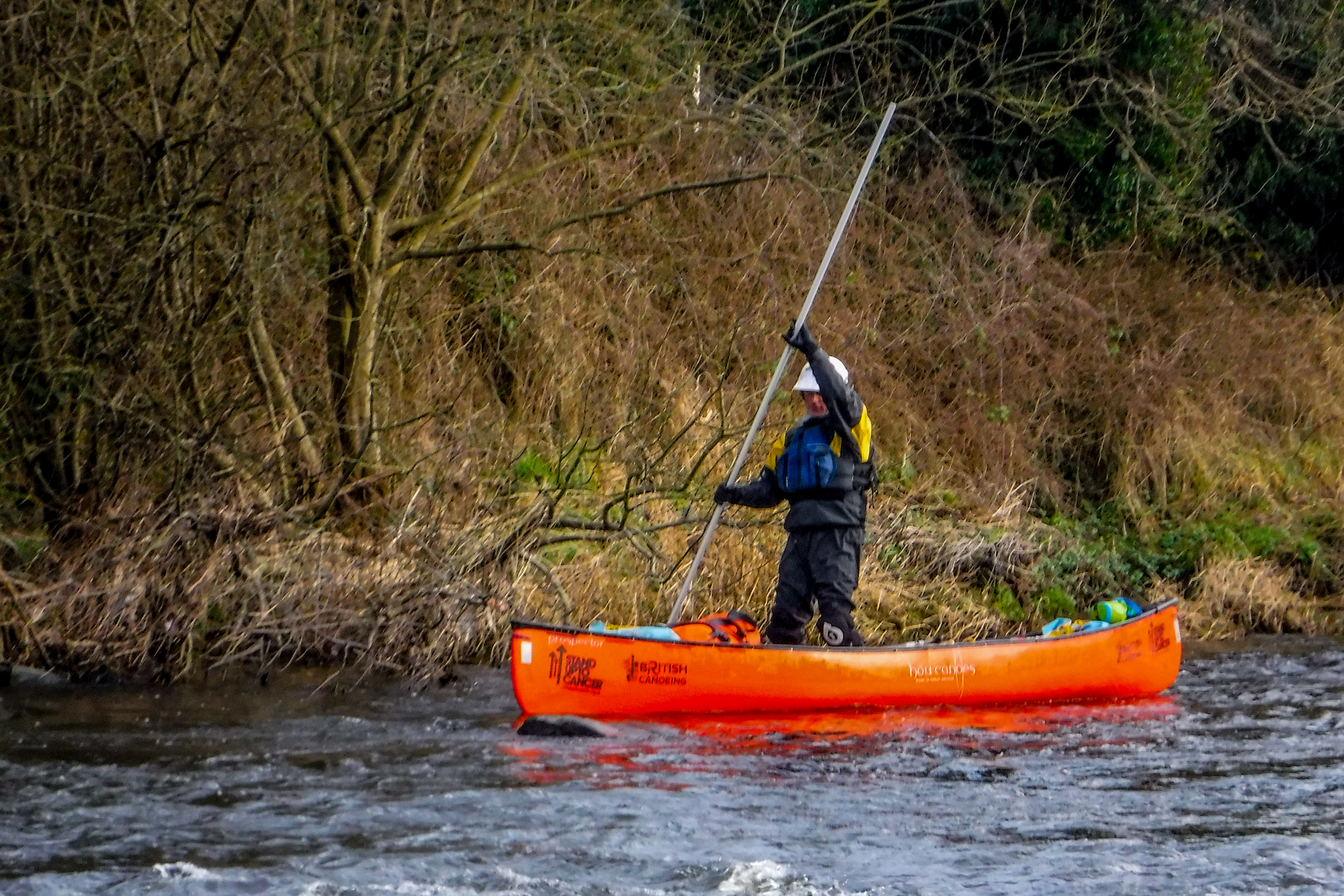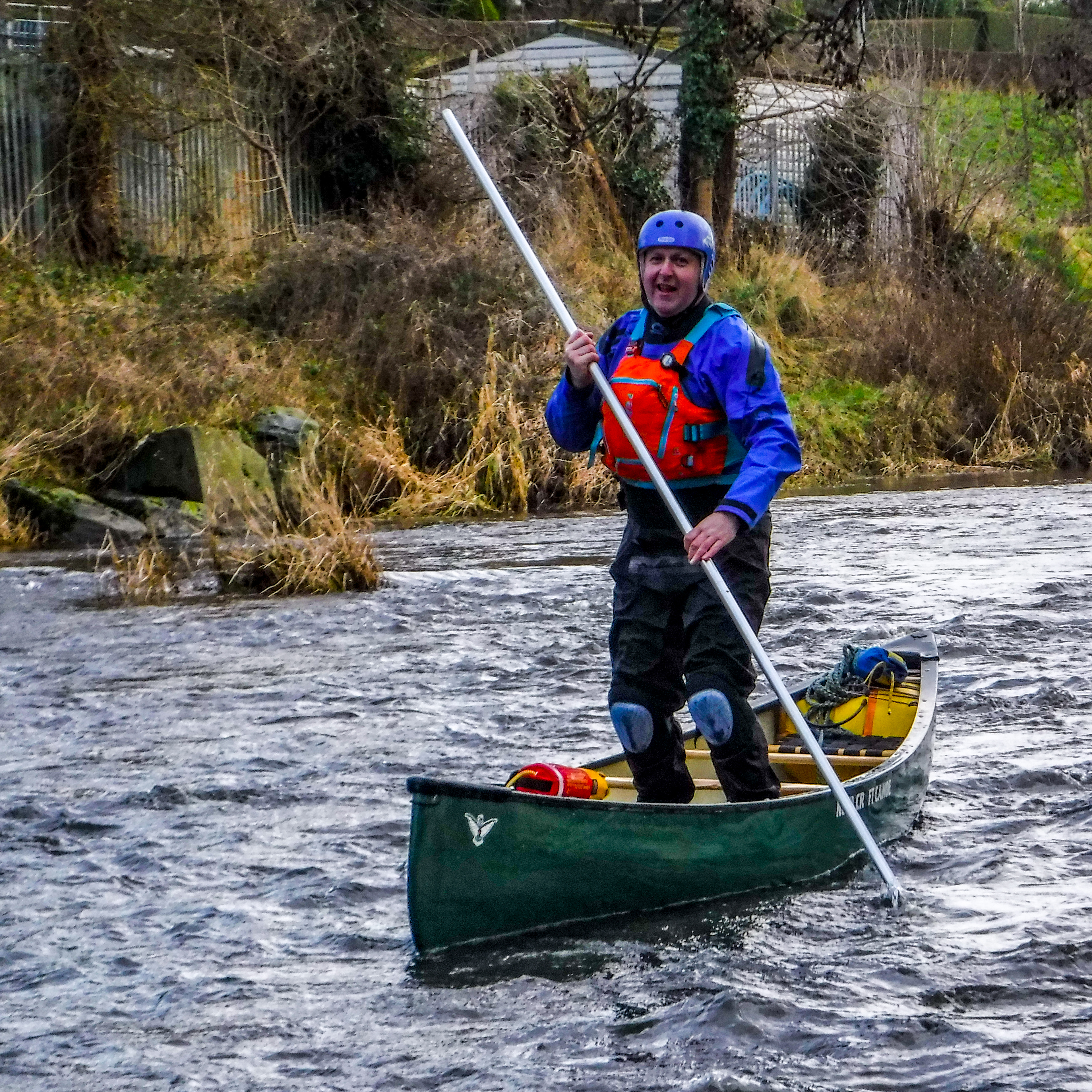Day 2 of the CANI Open Canoe Progressive Skills. Although back on the river Bann, the conditions were perfect to coach and practice a range of alternative skills while doing some revisions too. The photos below are in 5 groups, which captures the day. I think the photos show how versatile an open canoe can be on the river
Group 1: It's time to go and get on the river. Some revision to assess learning. Quickly moving to ferry gliding to improve control when crossing a flow. Forwards and reverse but then some doubles ferry gliding, just to keep the interest up. Key point: Trim & balance, coordination, agility, water speed, volume, boat speed, angle & edge etc.
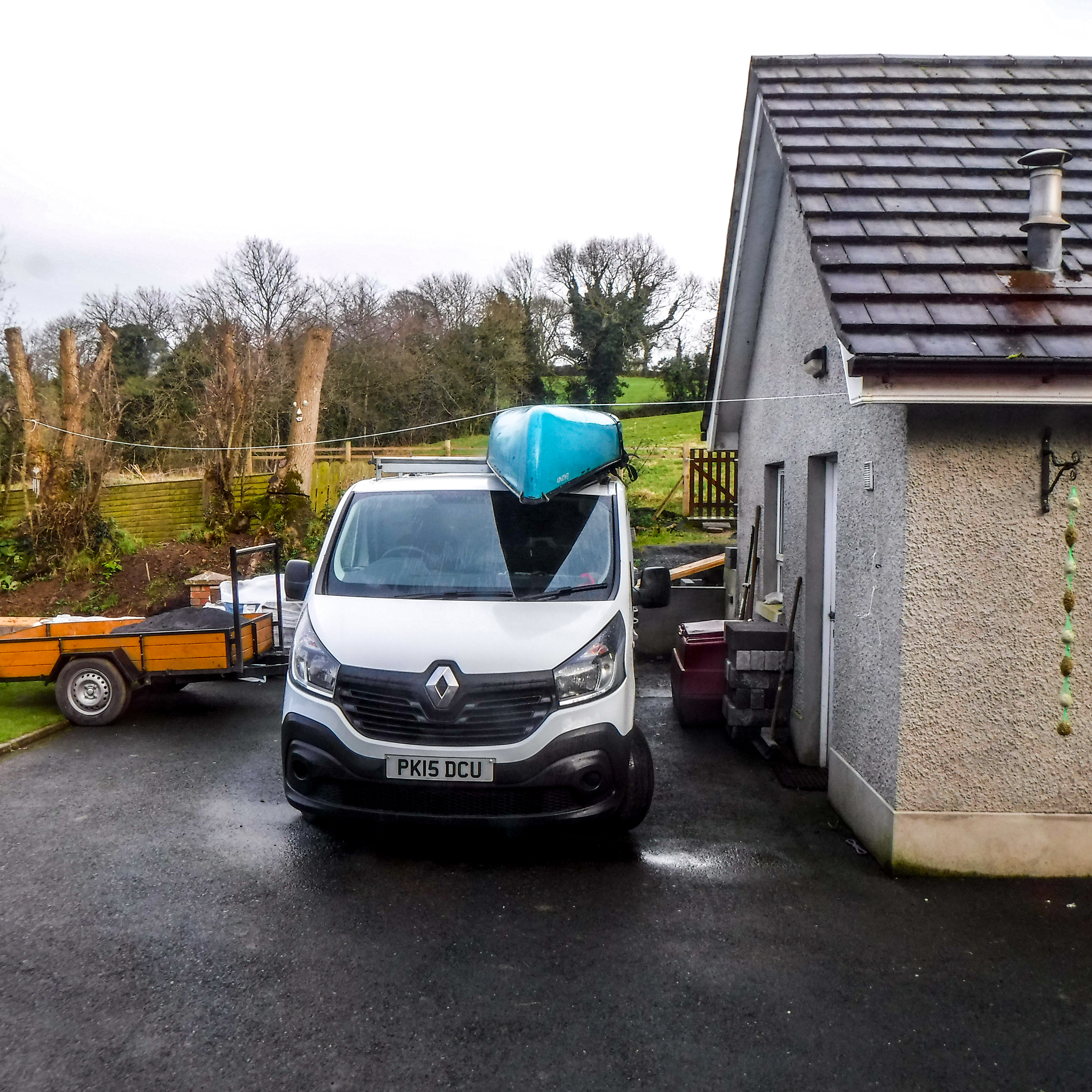
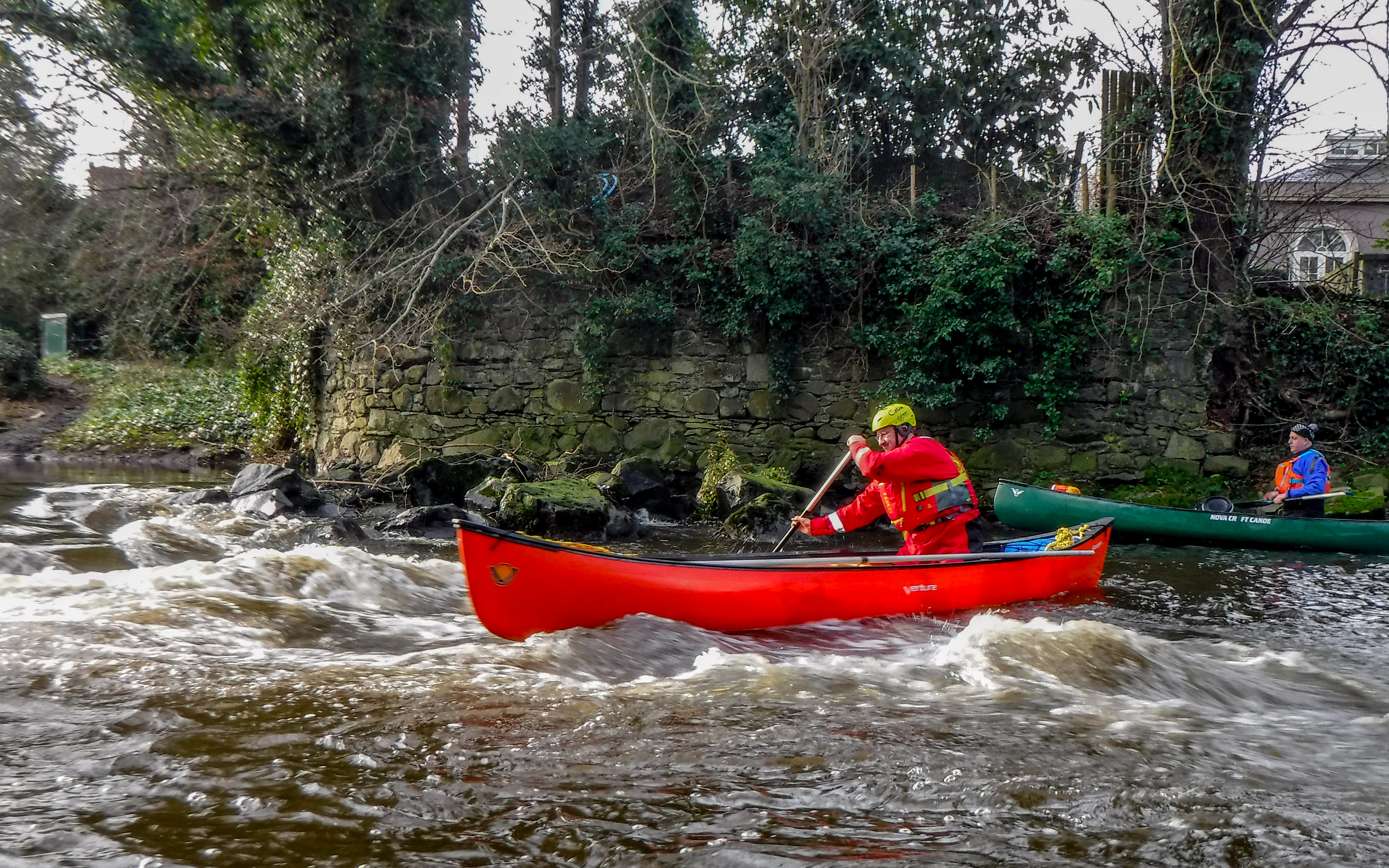
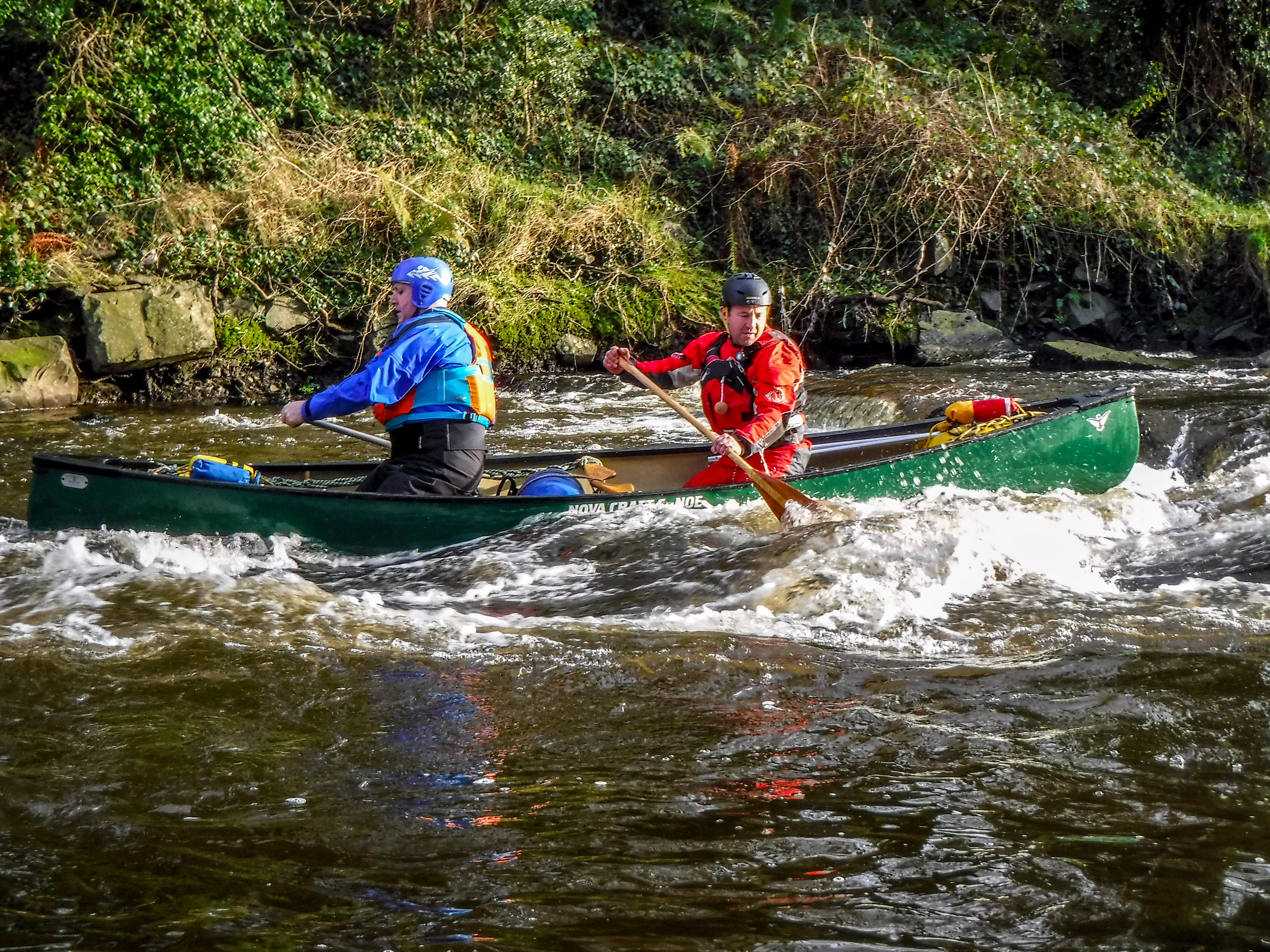
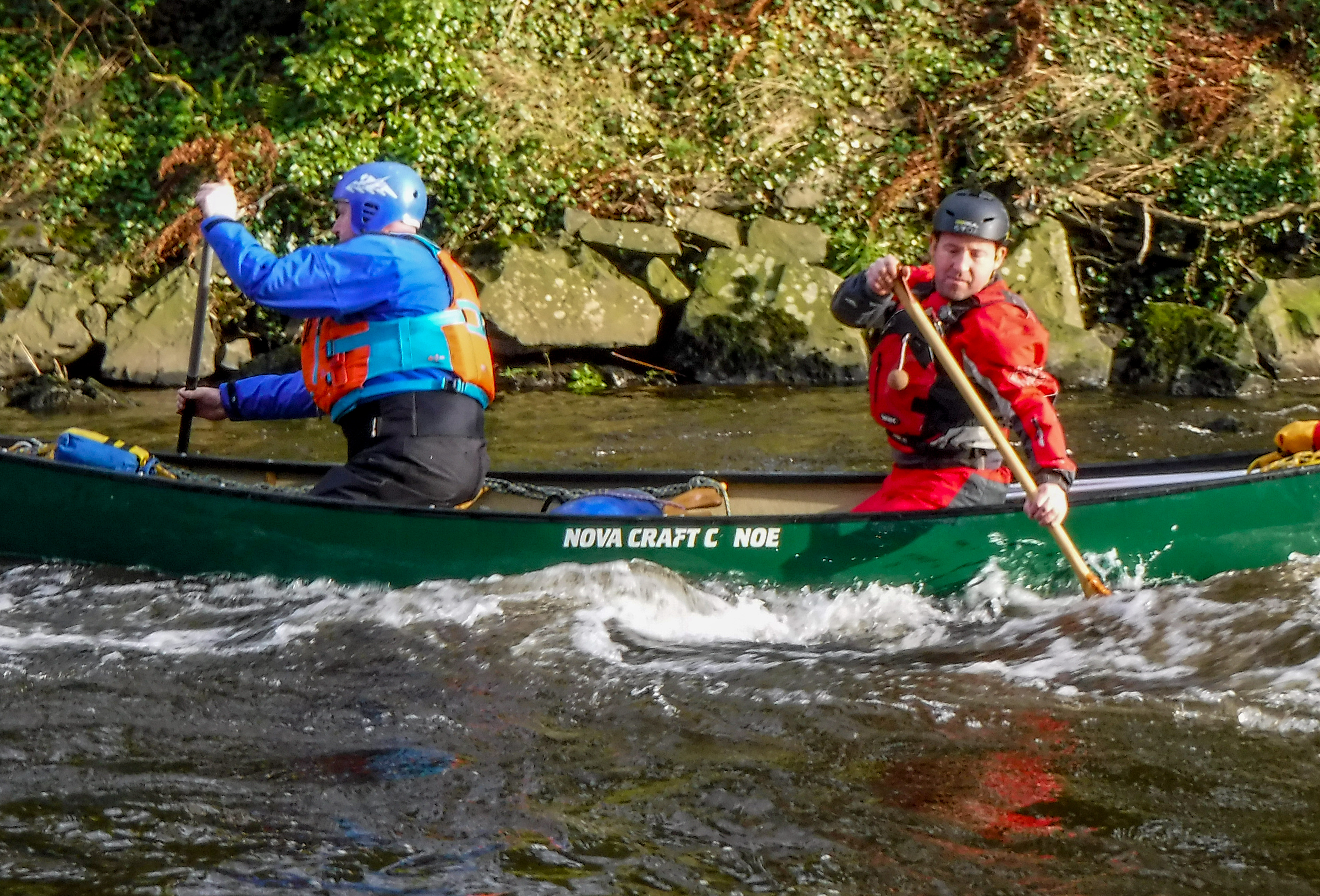
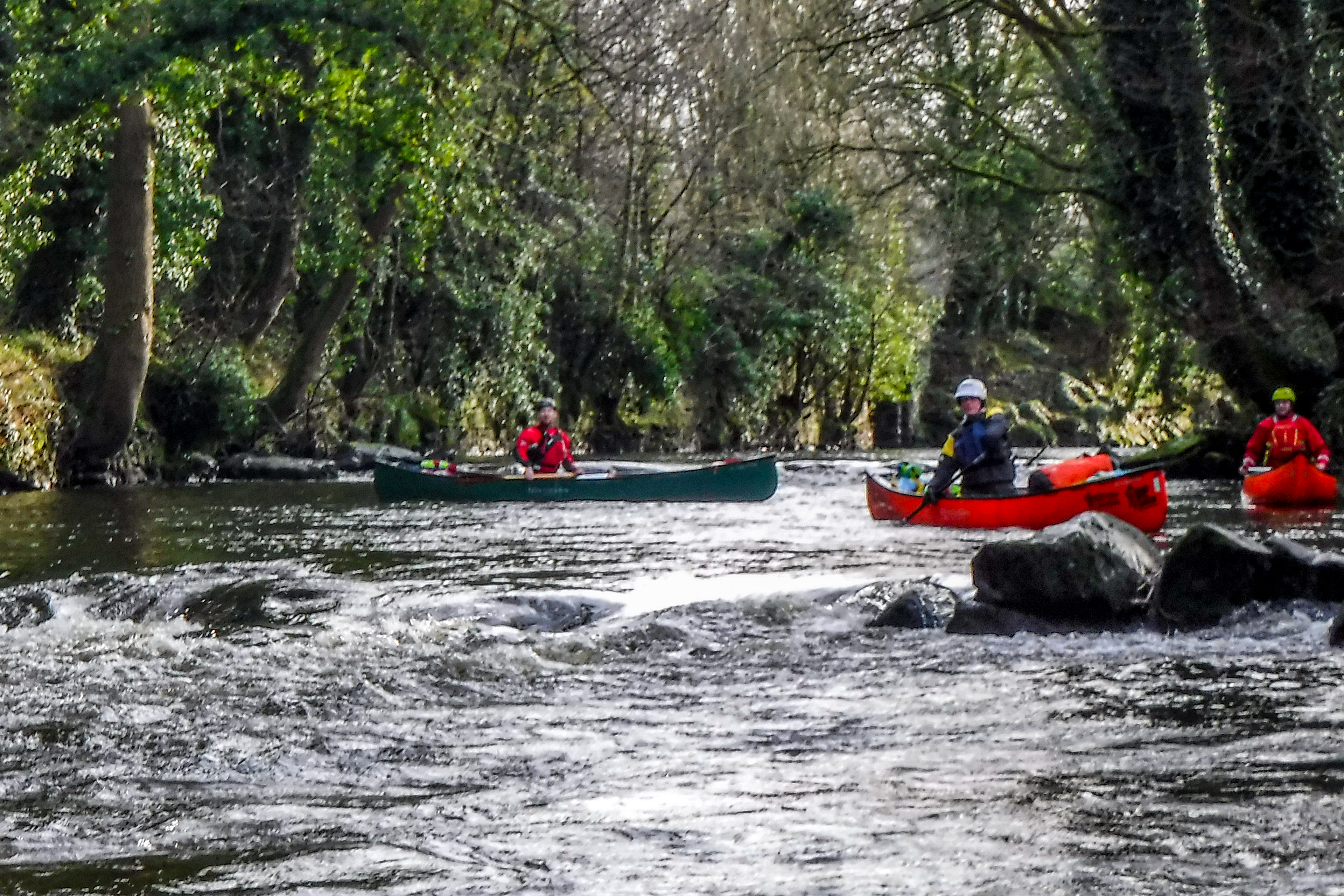
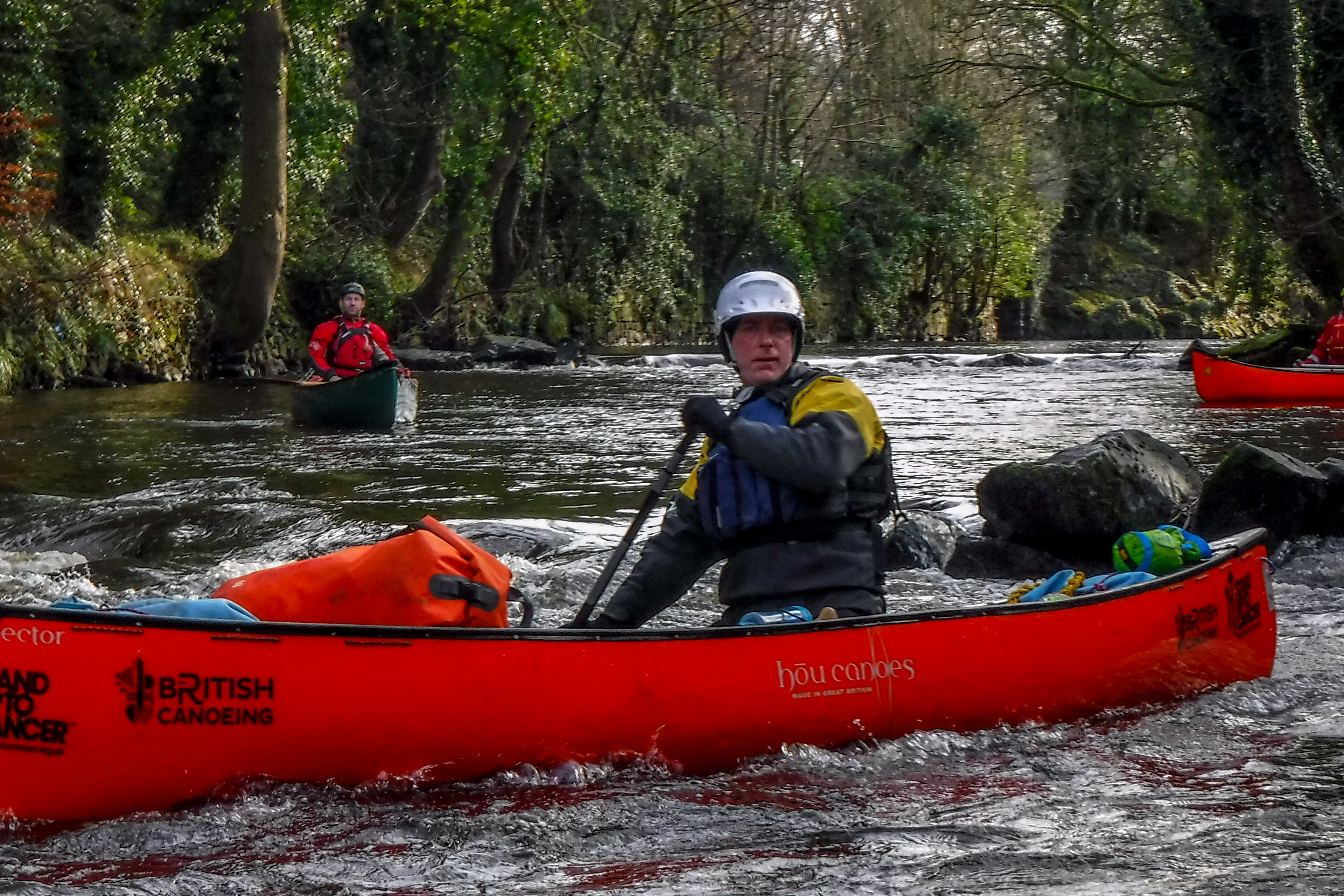
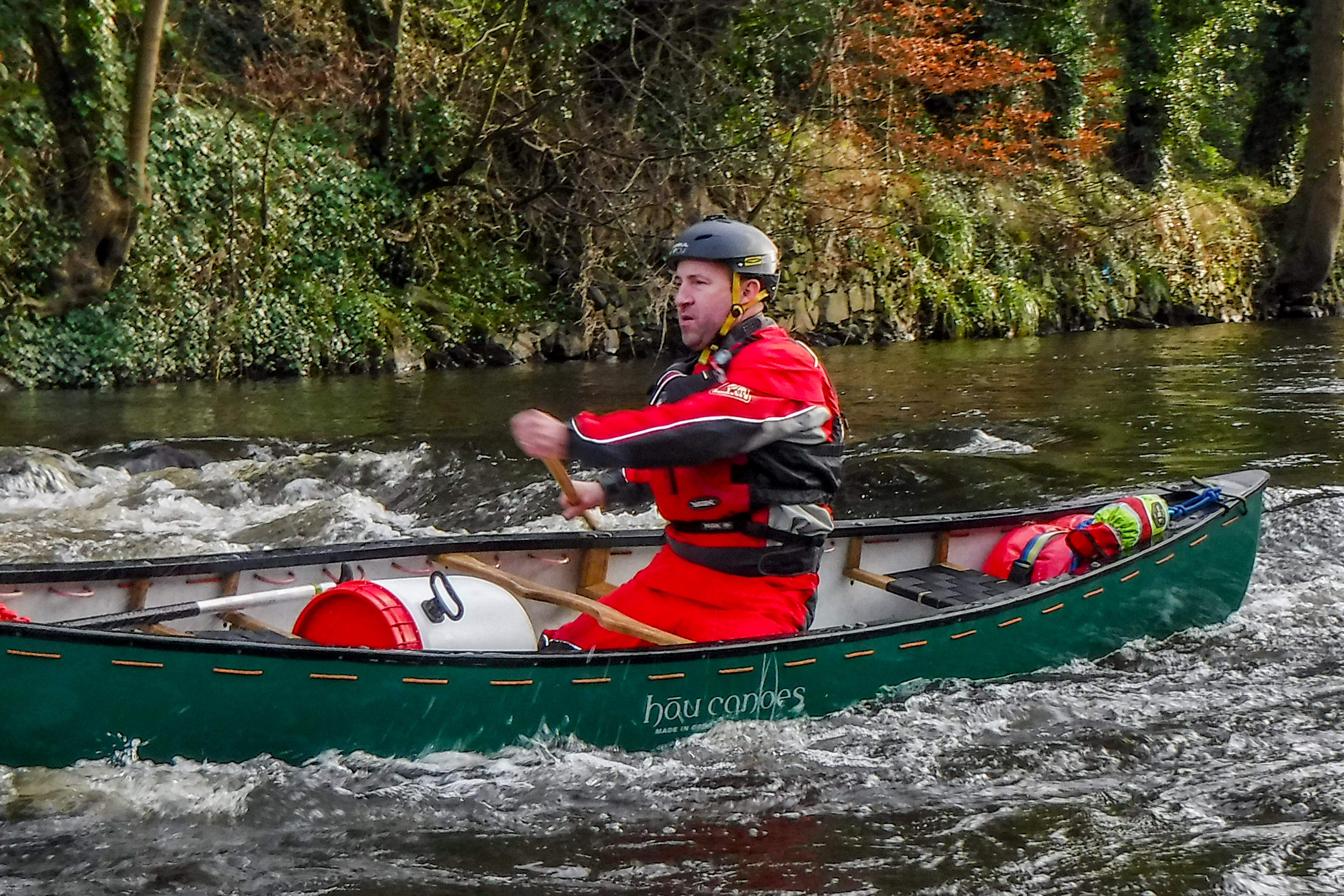
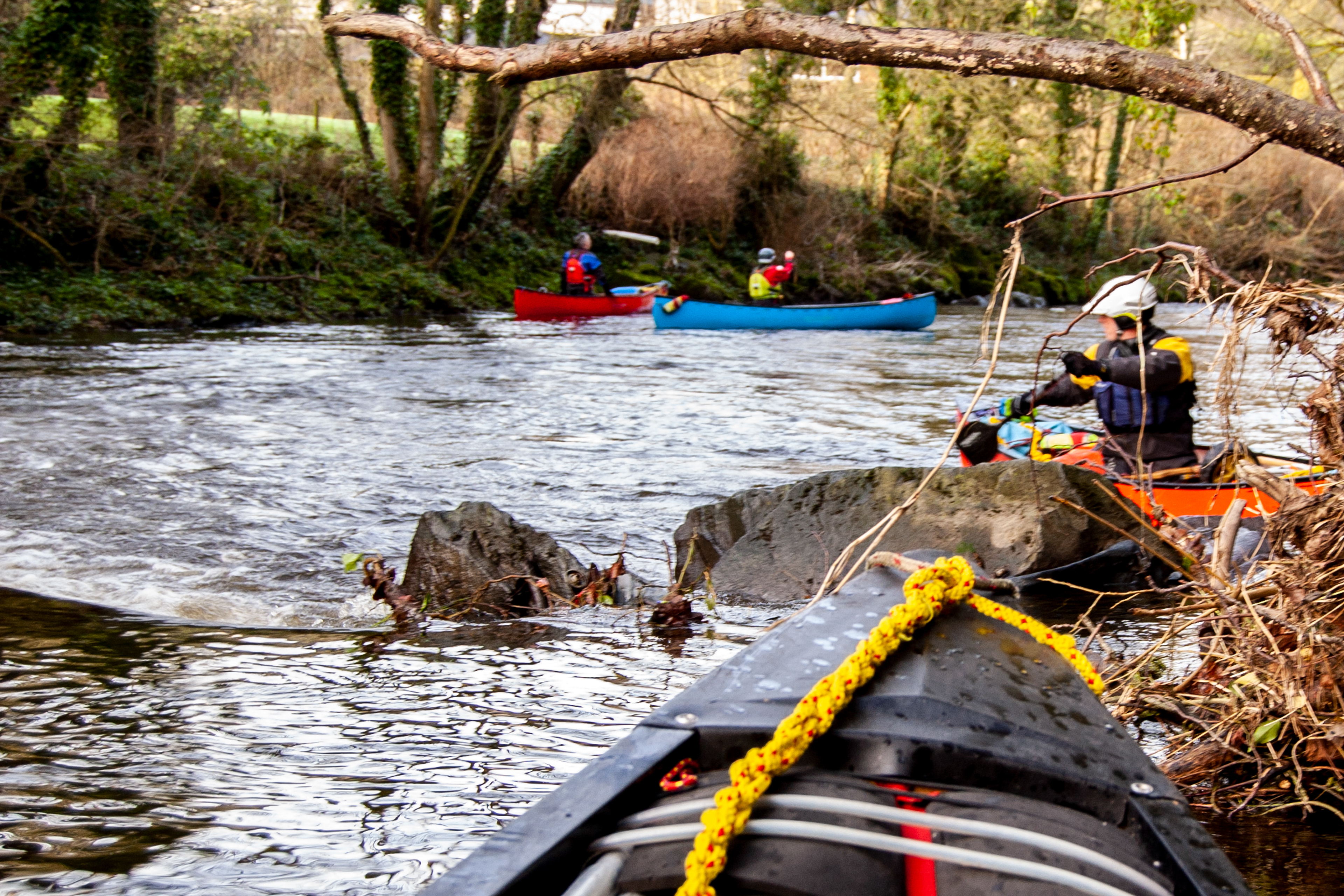
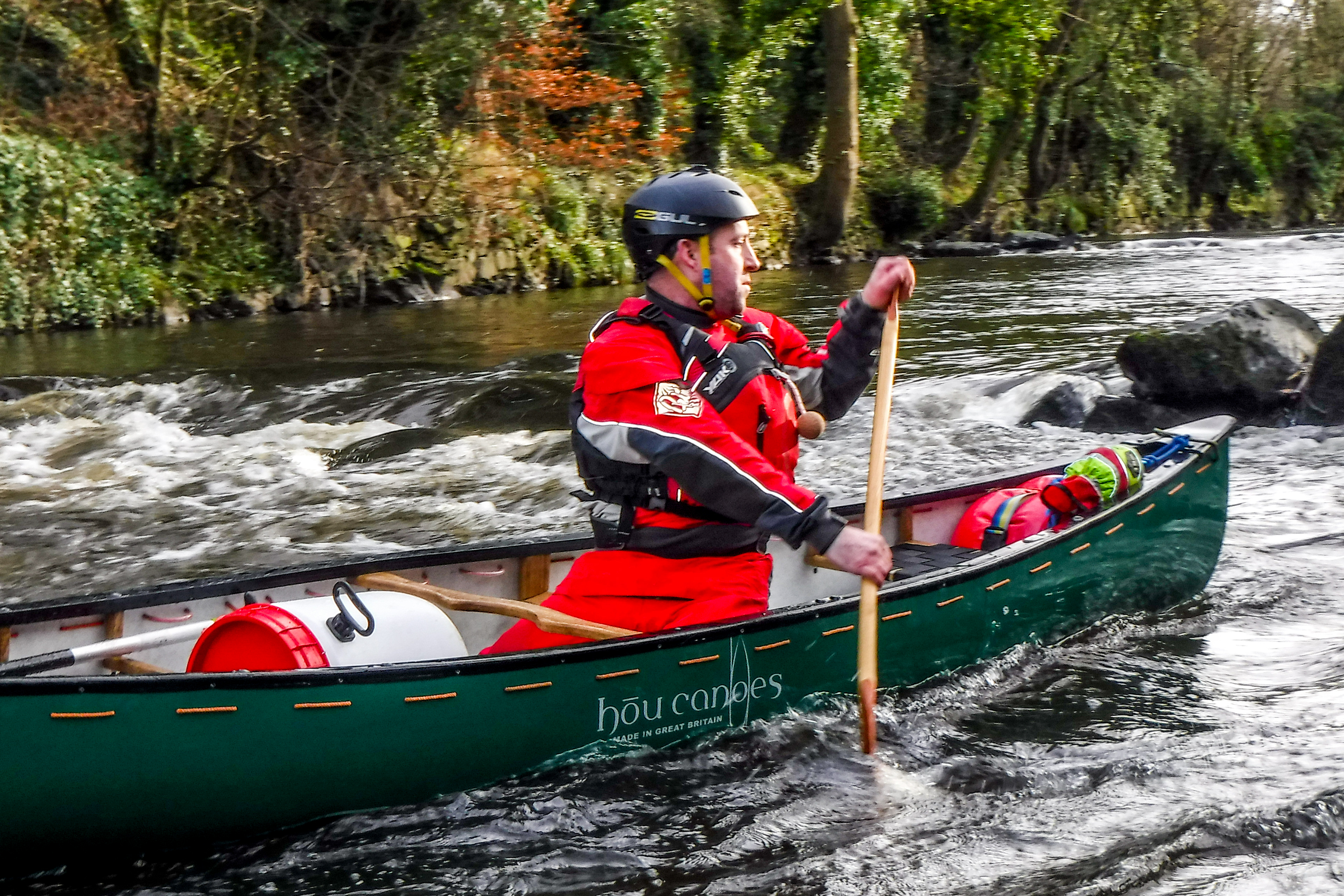
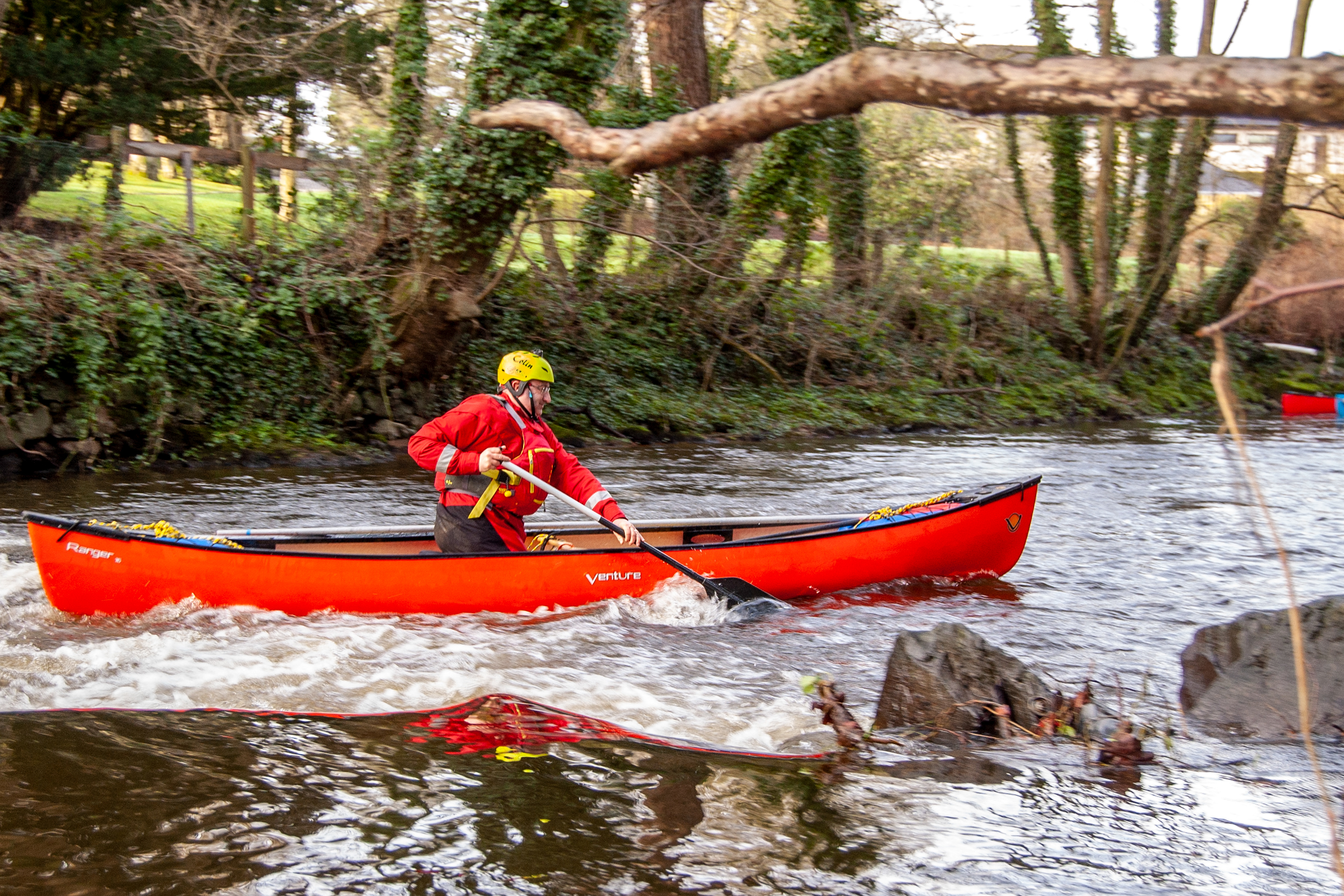
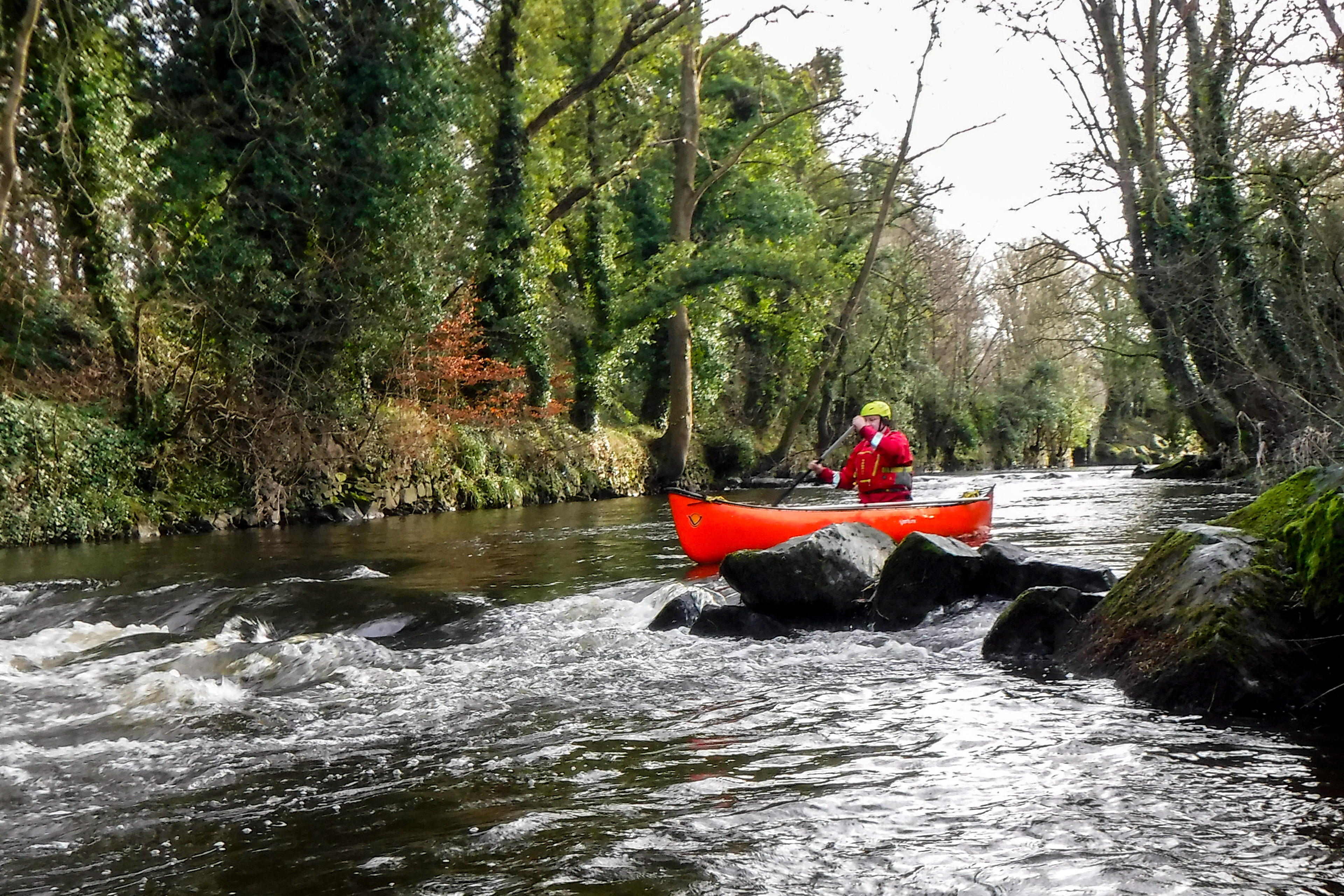
Group 2: A well deserved lunch and discussion on painter lines and bridles. While no photo to show our intruder, a large dog ran into our lunch site and stole as many sandwiches from us as he could. We forgave the mutt but the owner was rude, never spoke to us, did not try to stop or get his dog and look ridiculous. Well we got a laugh.
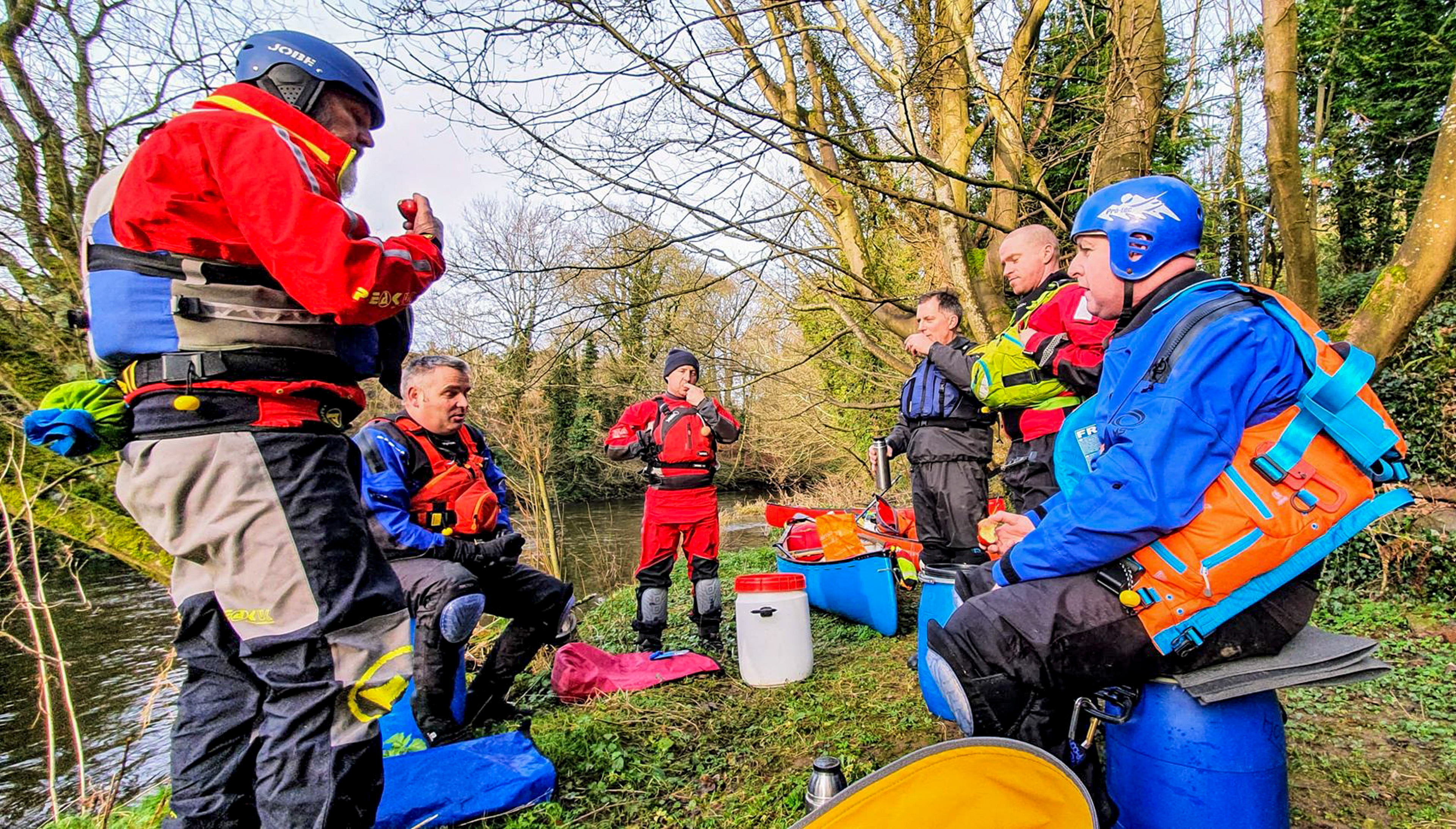
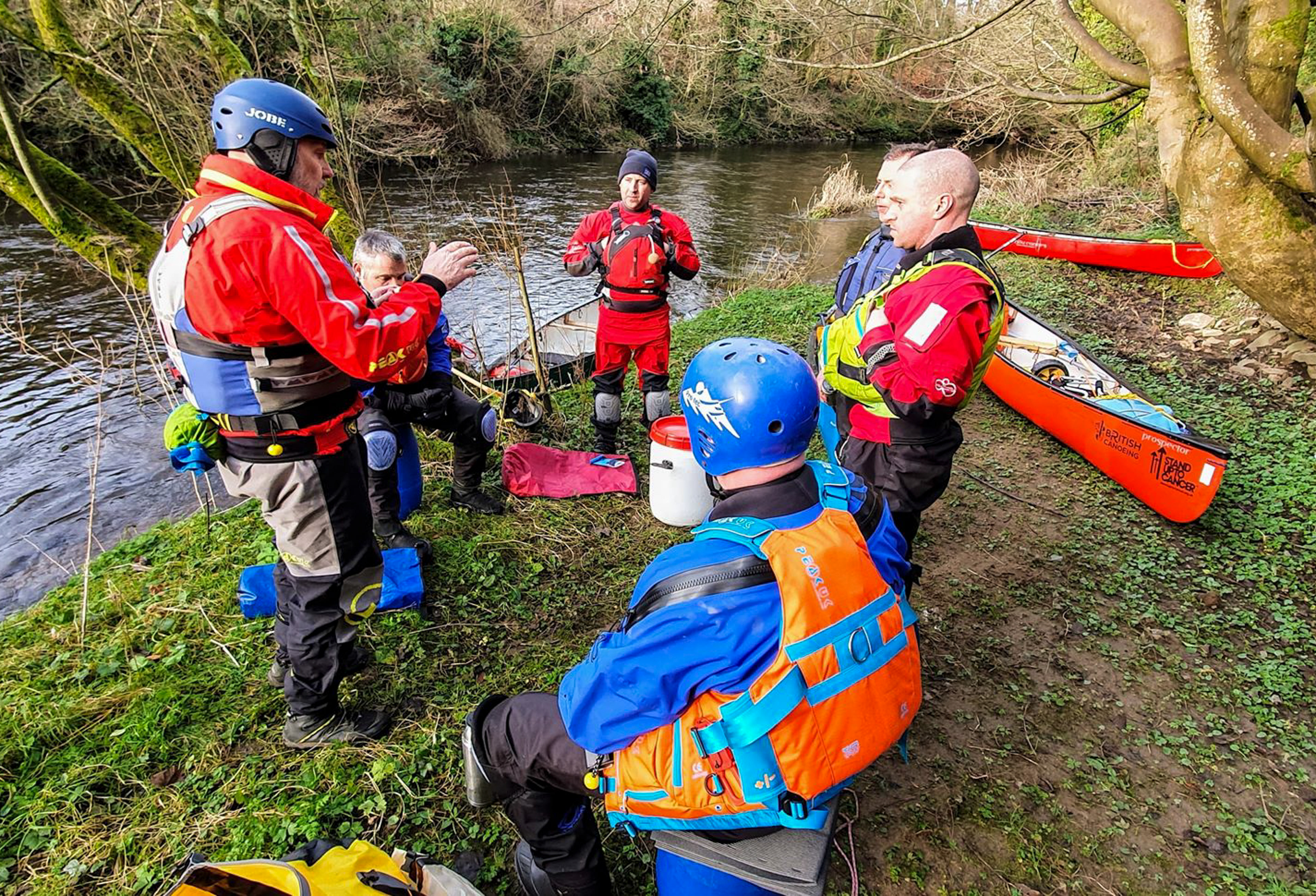
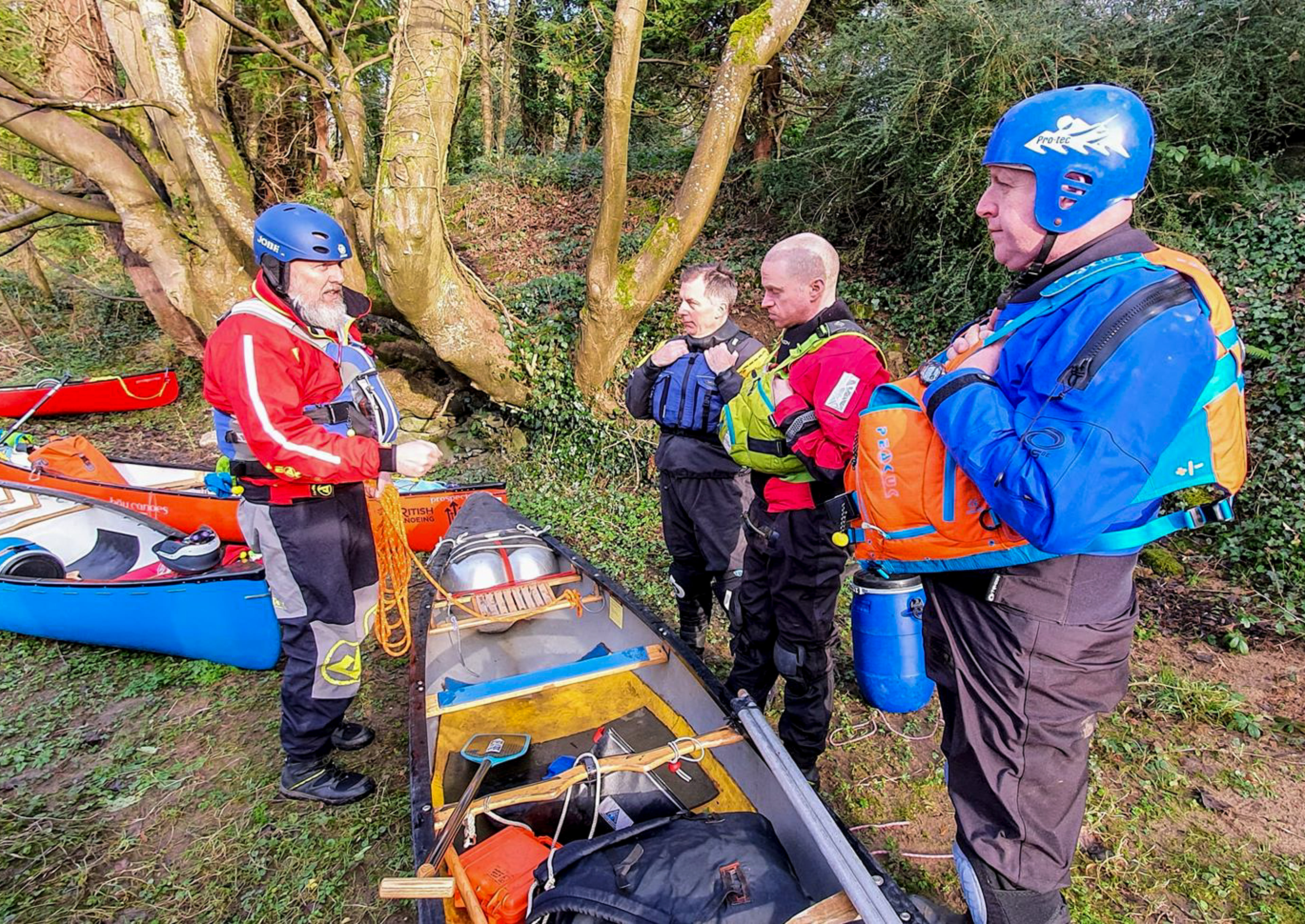
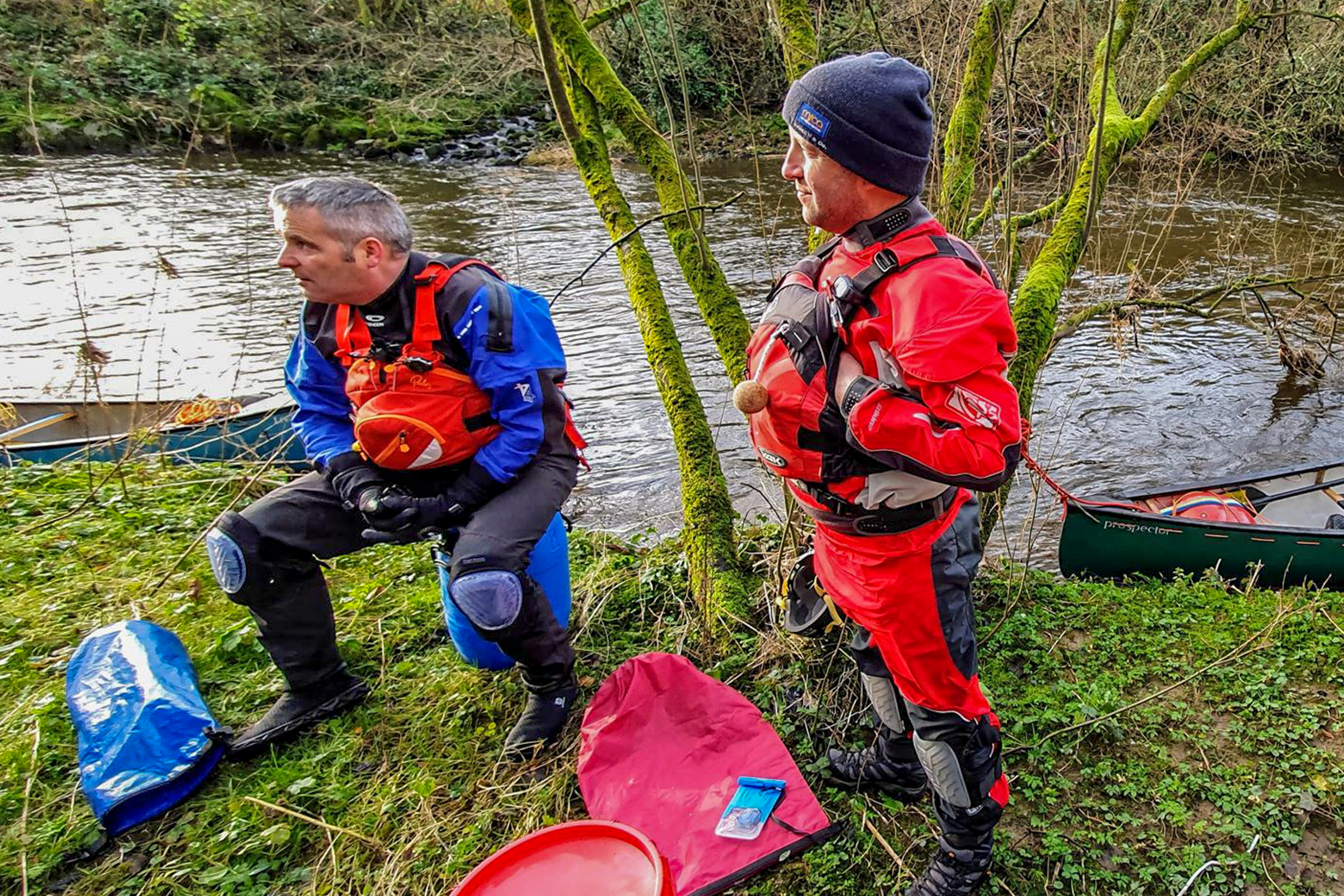
Group 3: After lunch it was time to test how to use our painter lines. Some key points: I do not like rescue ropes to be used as painters. Rescue kit needs to be available for that purpose. There is a chance that while lining (downstream) and tracking (upstream) the boater could fall into the river and need rescued by a throw rescue. If their peers have their rescue ropes tied into their lining system, they can't help. Also the abuse of the painters is best not inflicted on rescue kit.
Below we are lining down a large weir that was to shallow to run without damage to a boat. This demonstrated that the normal 15 metre painter is sometimes not enough. I like when possible to line the boat to a safe place before I start to walk after it. This weir when it has more water can be tricky so I usually join my two 15 metre painters to make a 30 metres rope, which is just right to control my boat and park it safely out of all fast flow, allowing me to carefully walk down the weir and over the very slippy rocks without thinking about my boat. I'm up first, follow my sequence below.
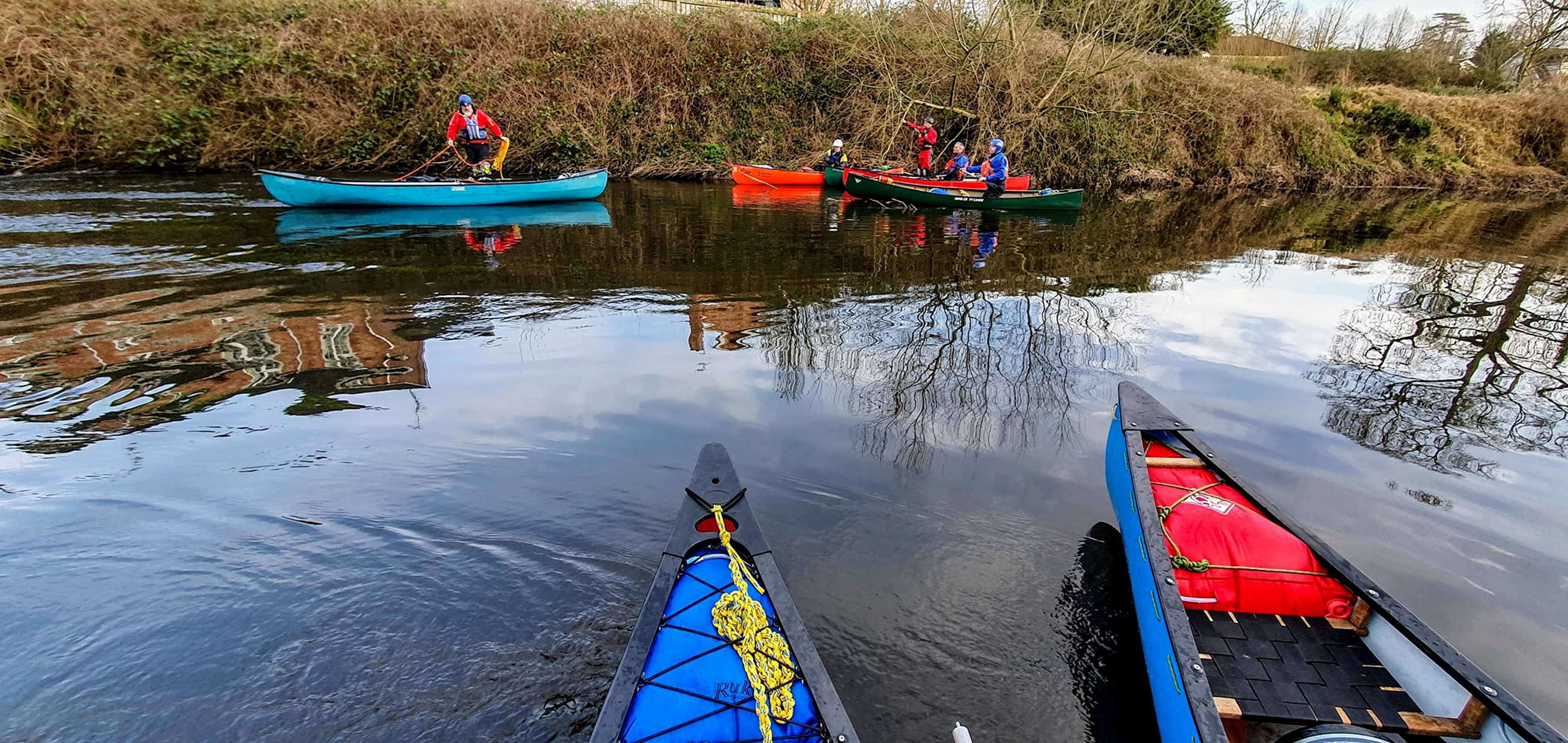
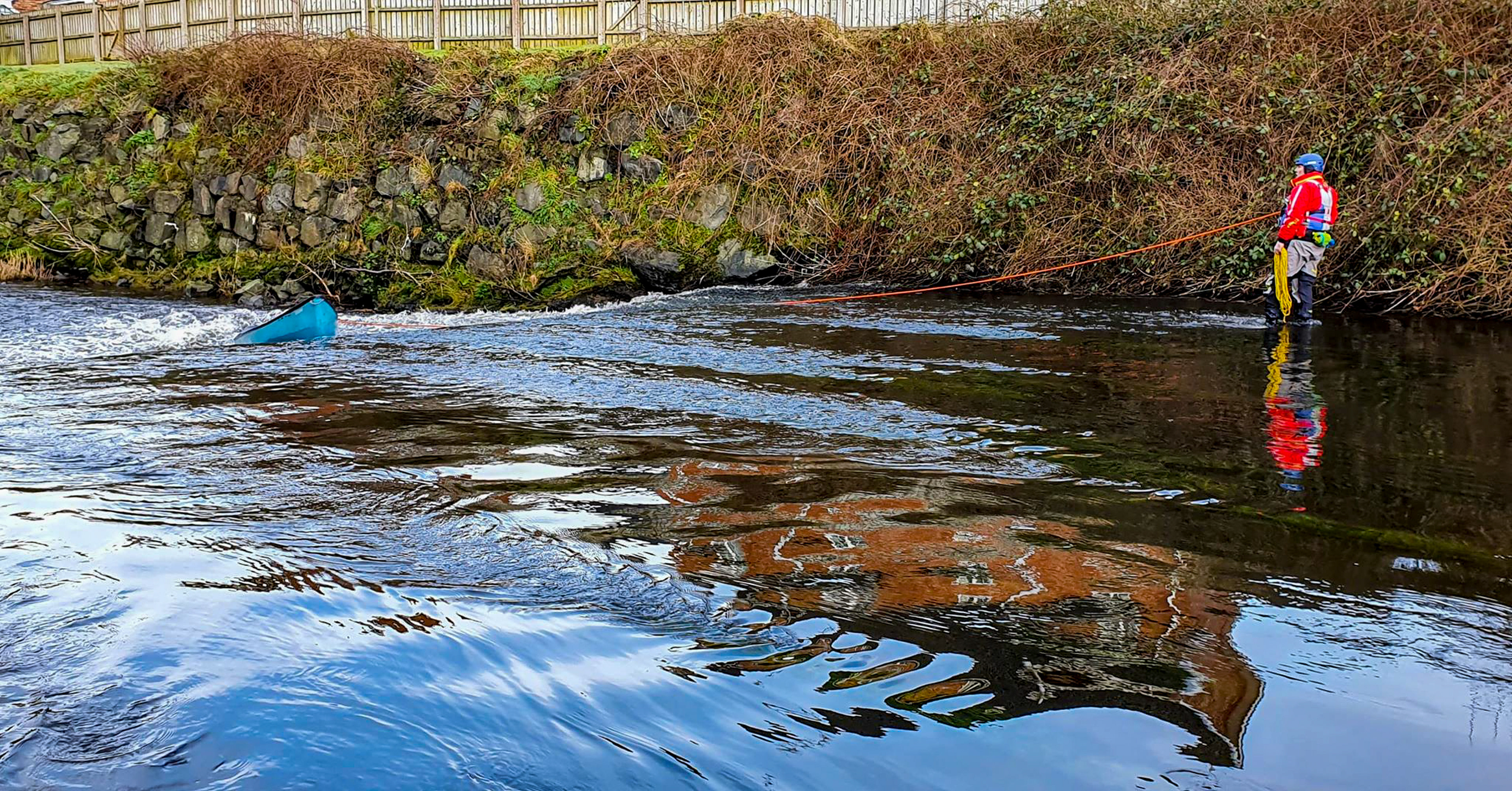
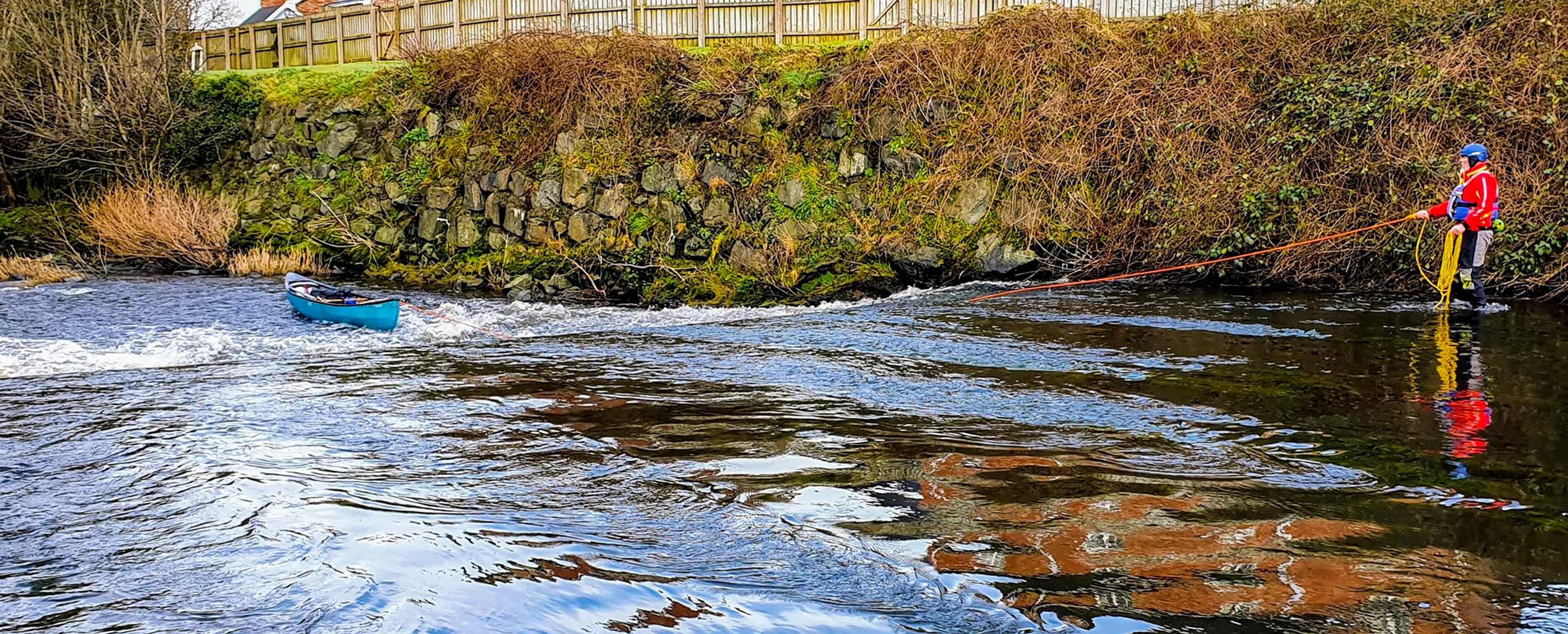
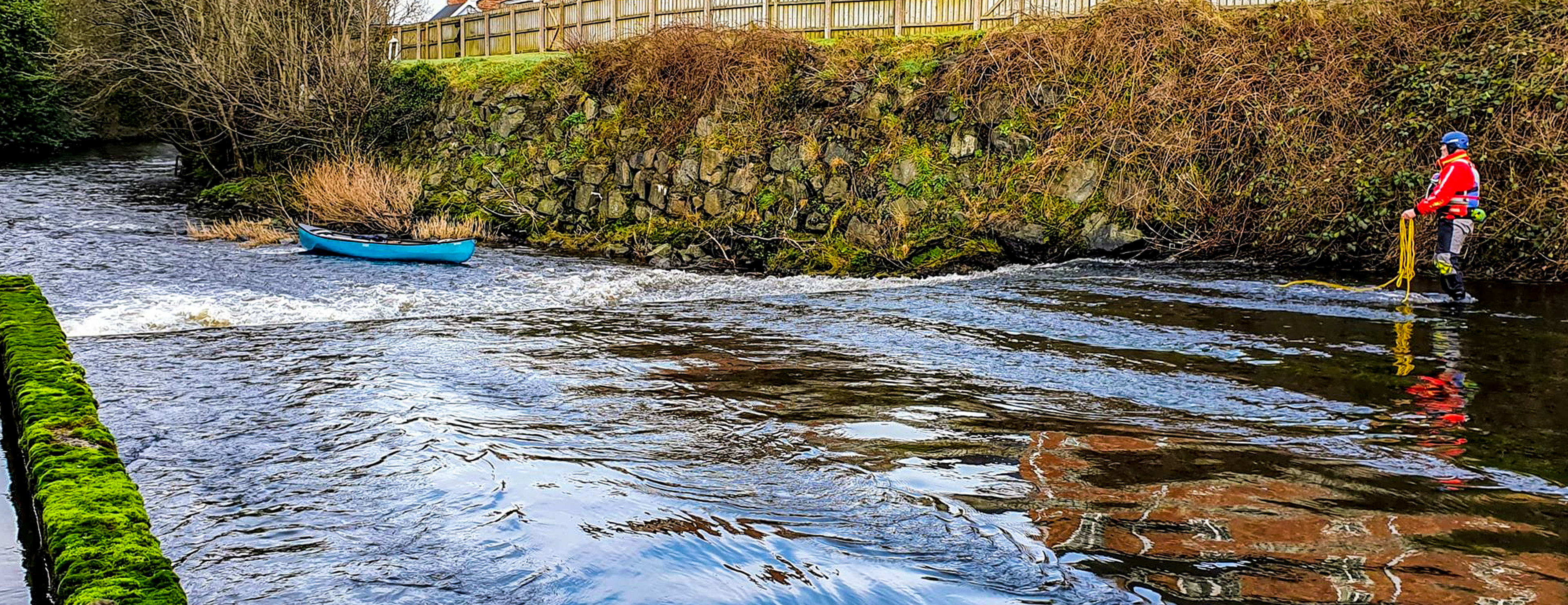
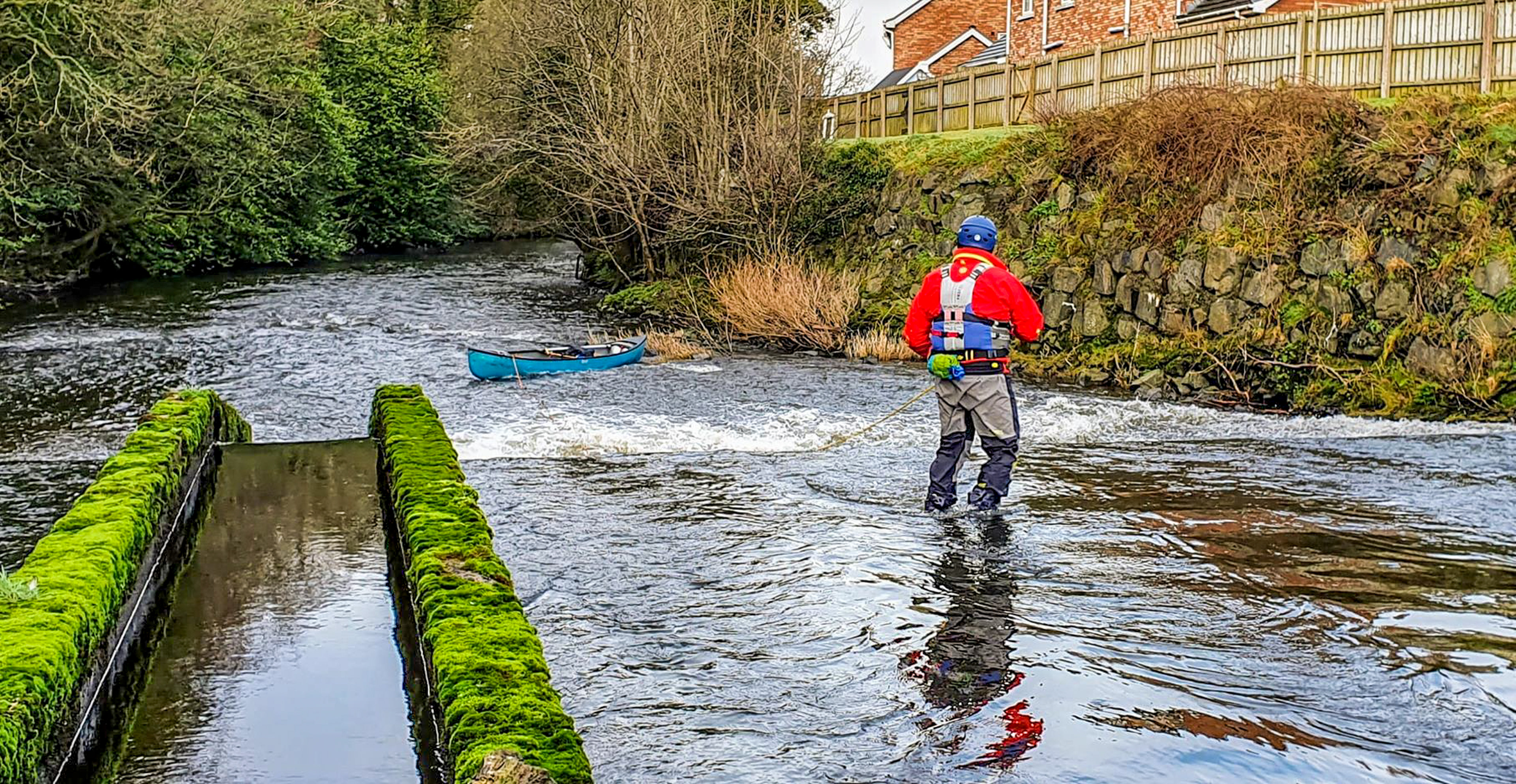
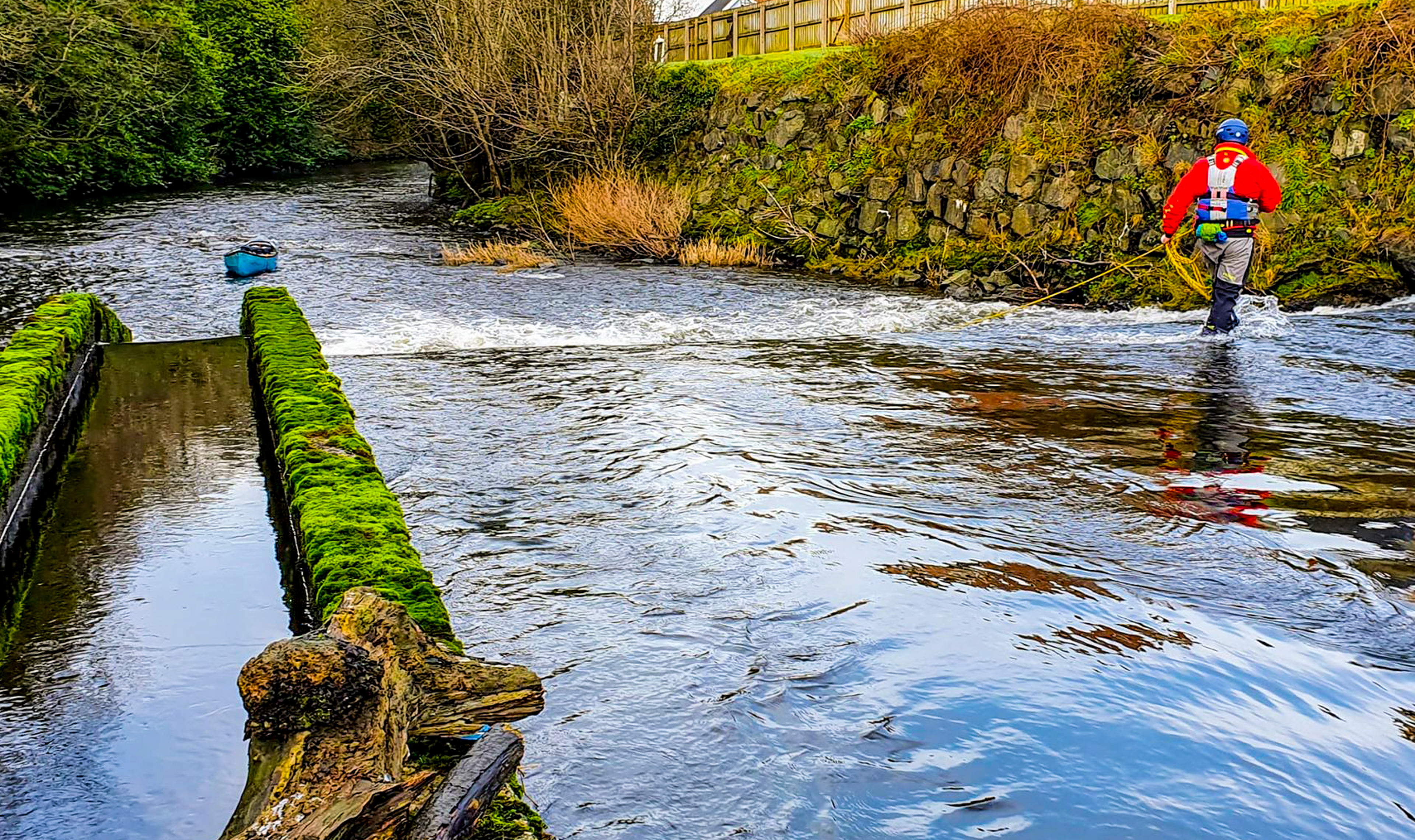
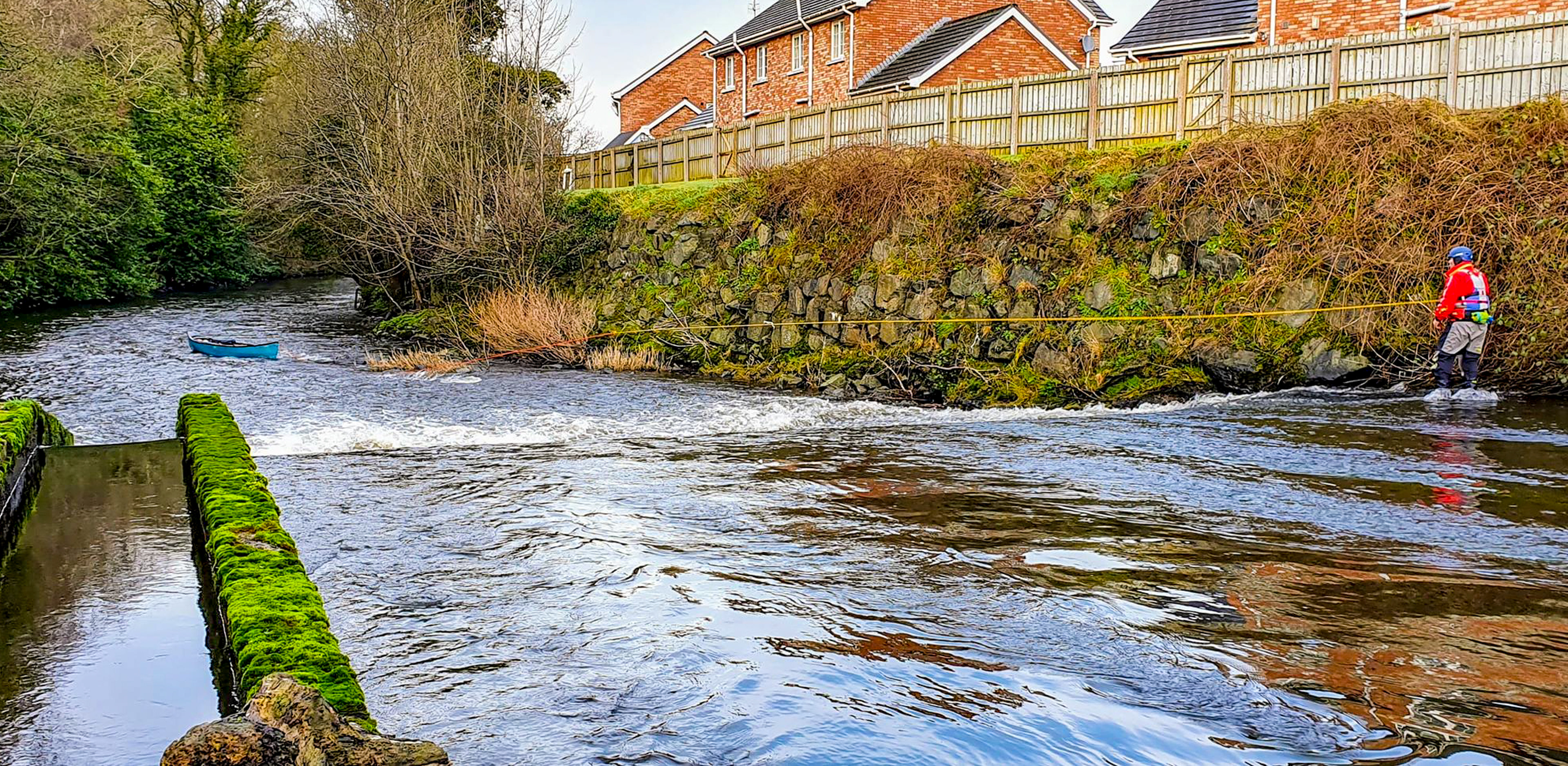
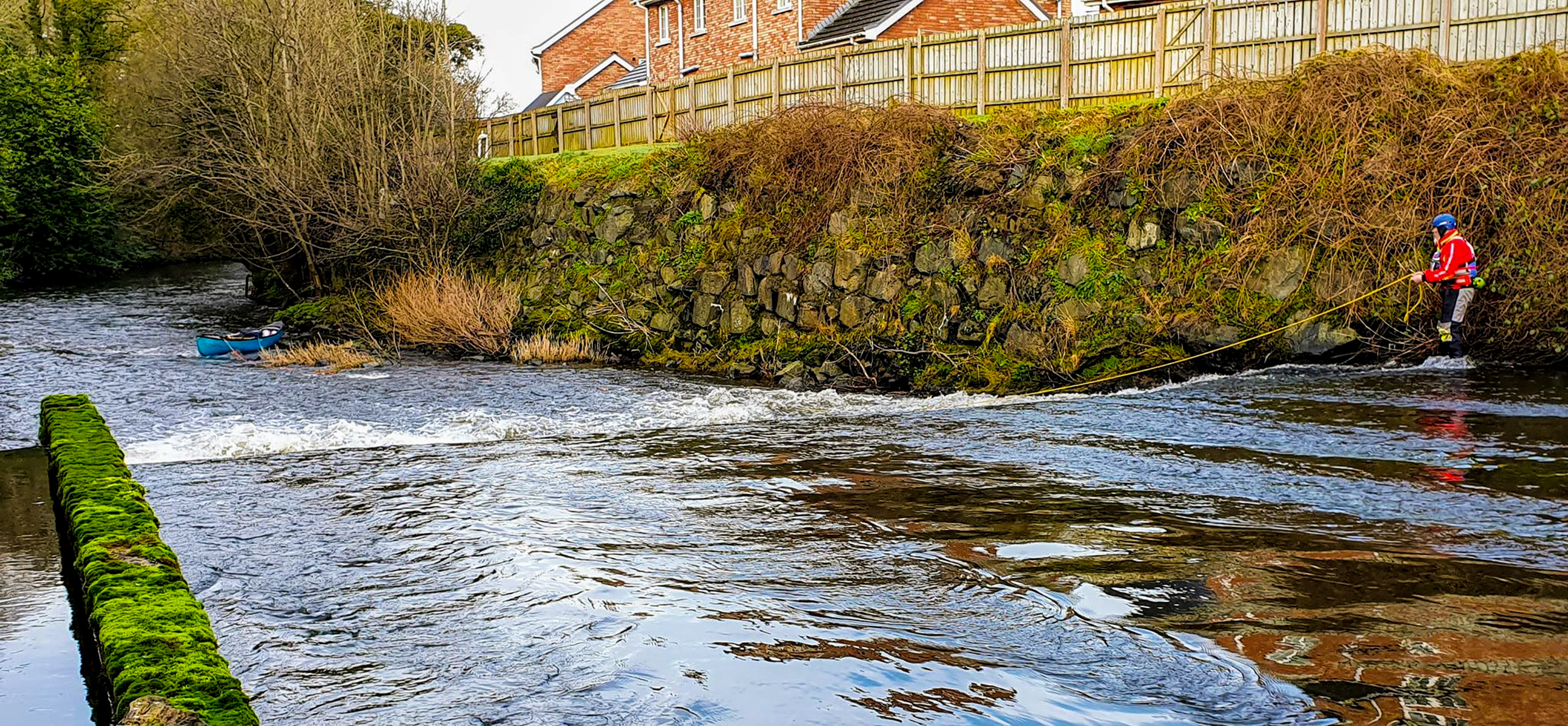
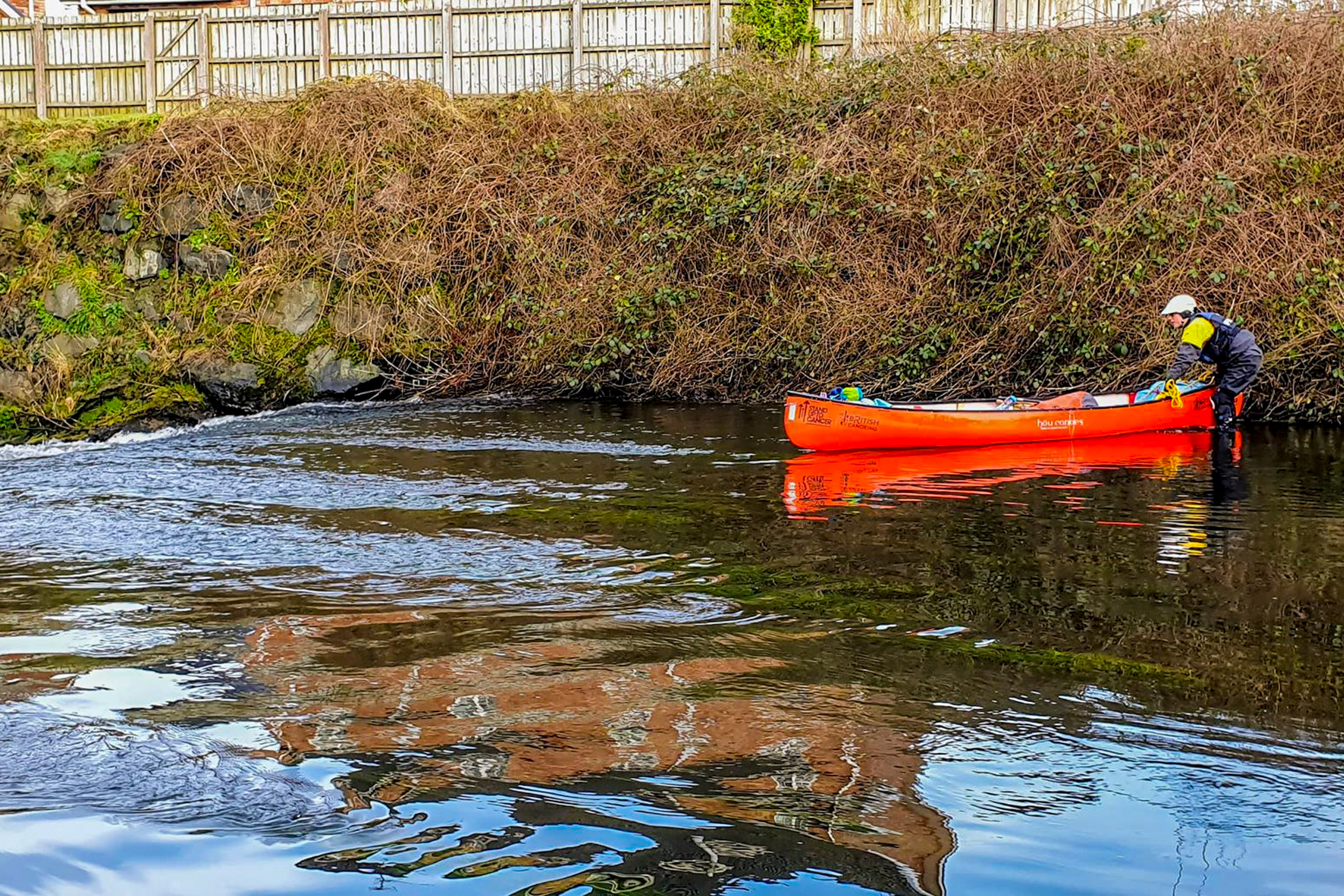
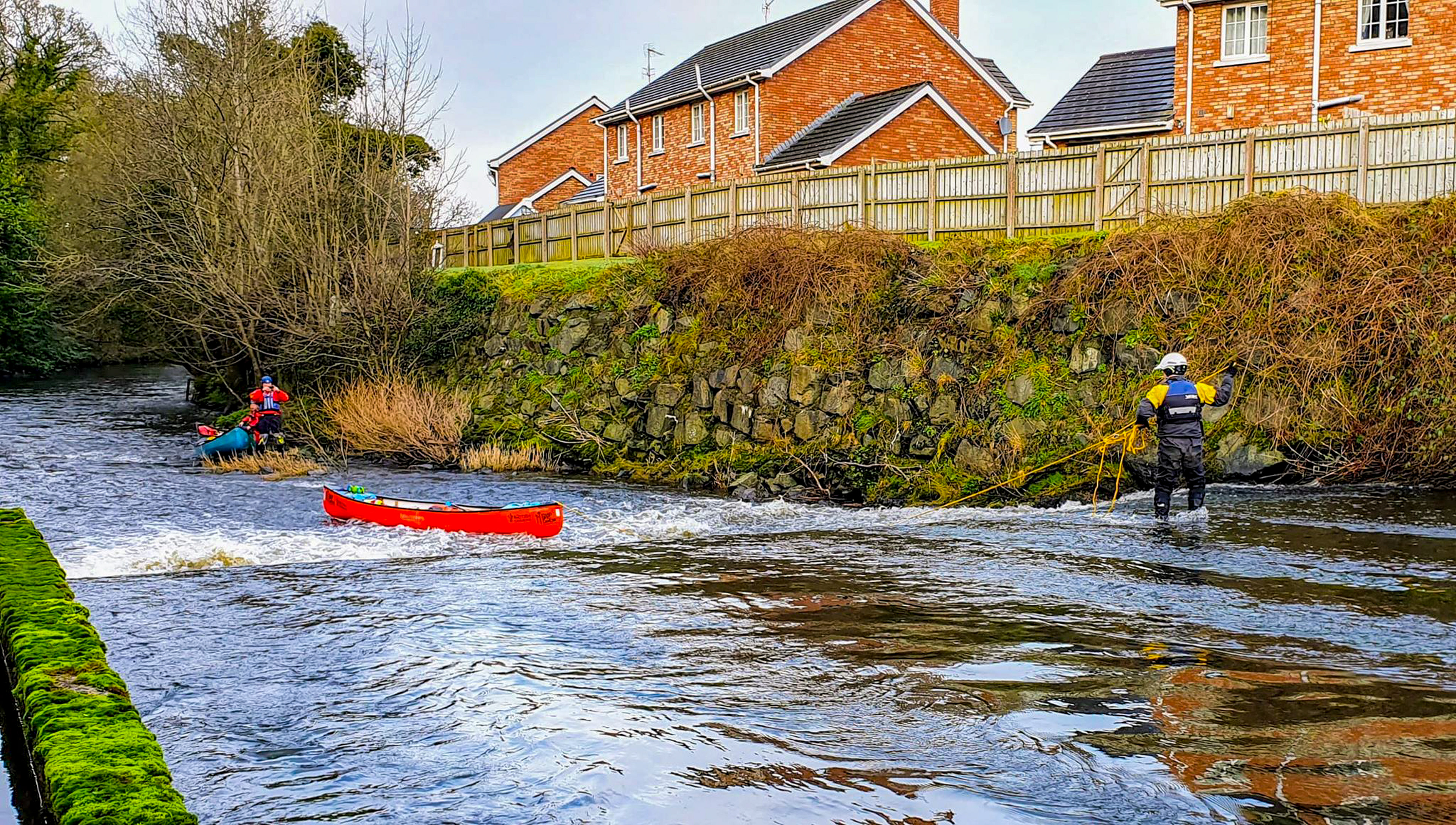

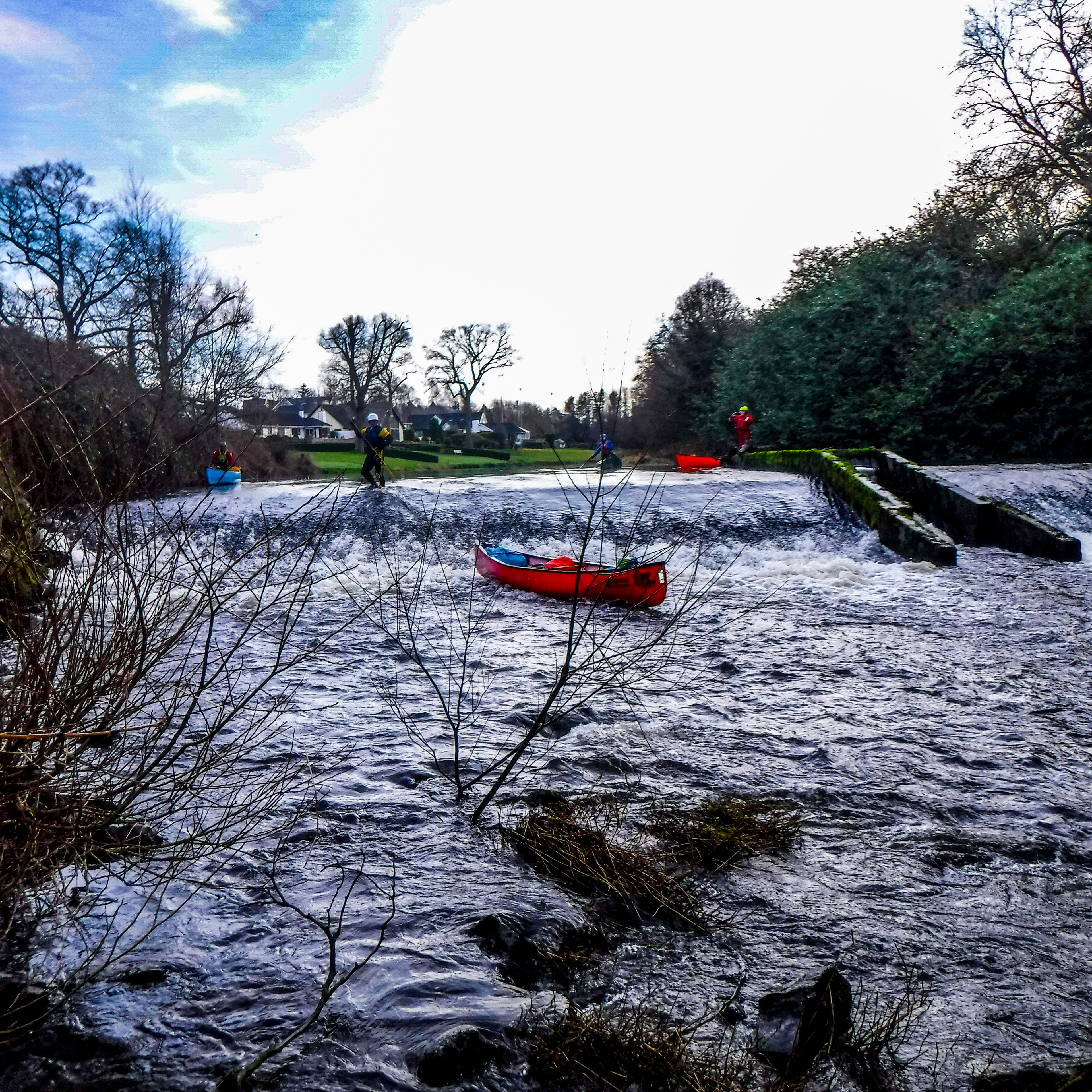
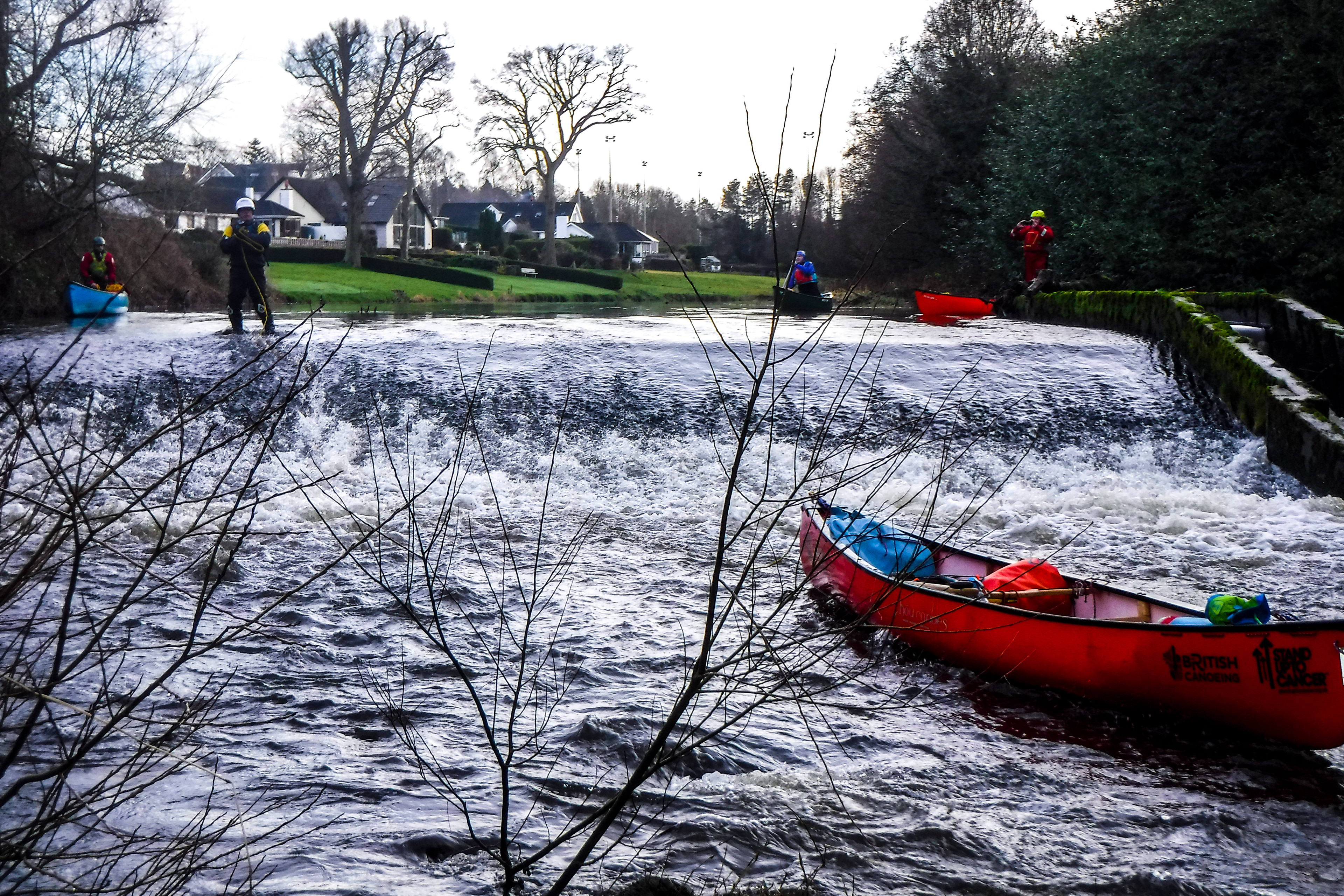
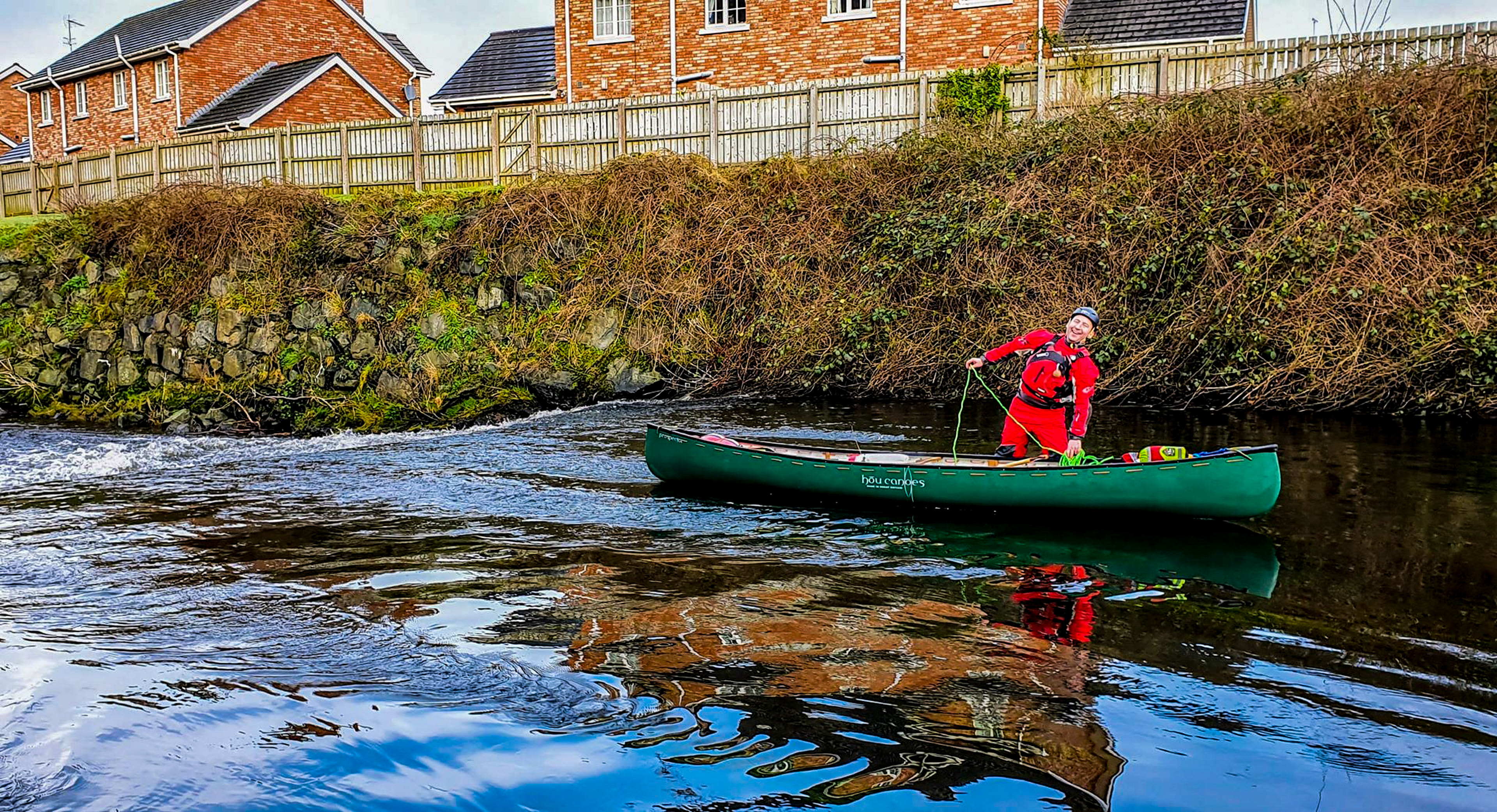
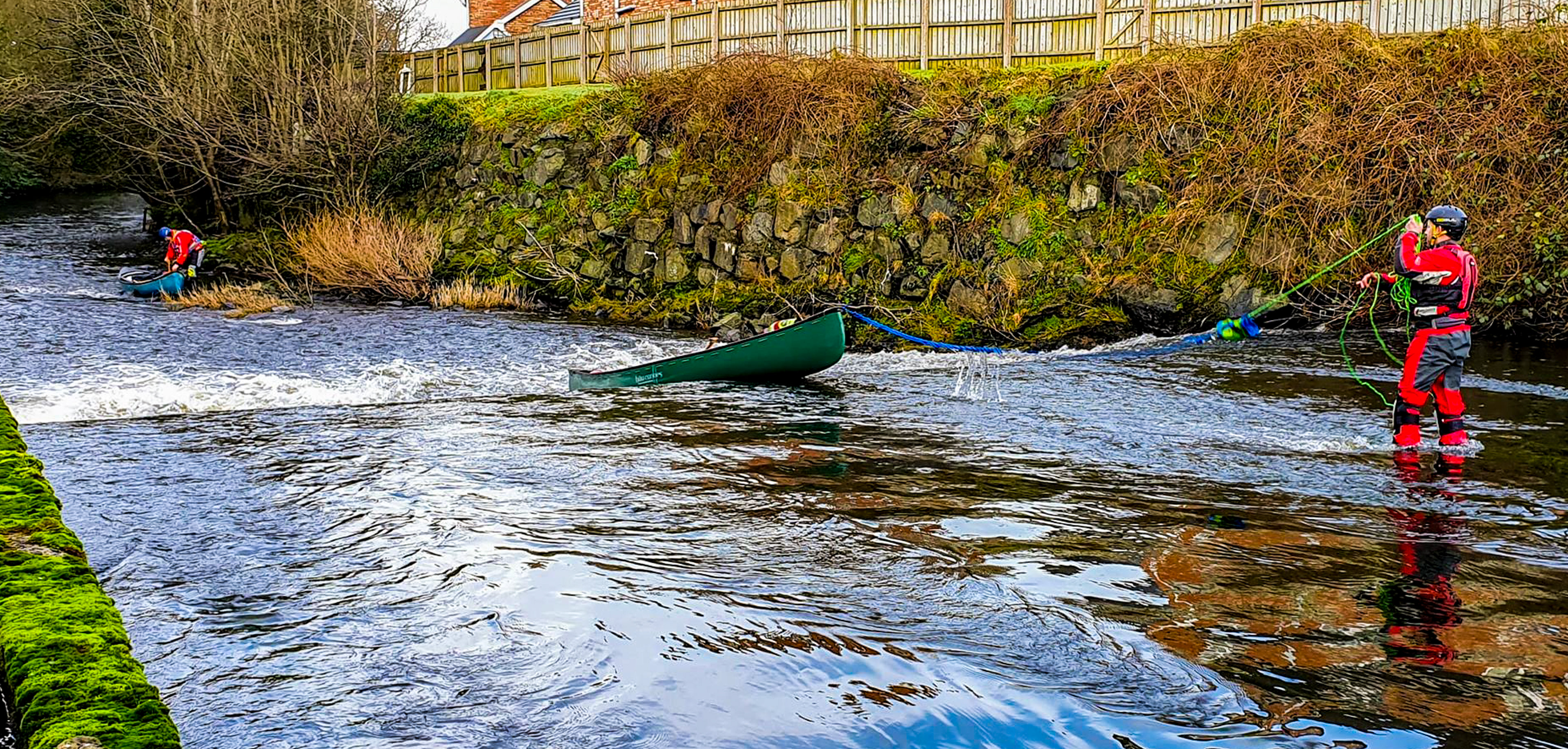
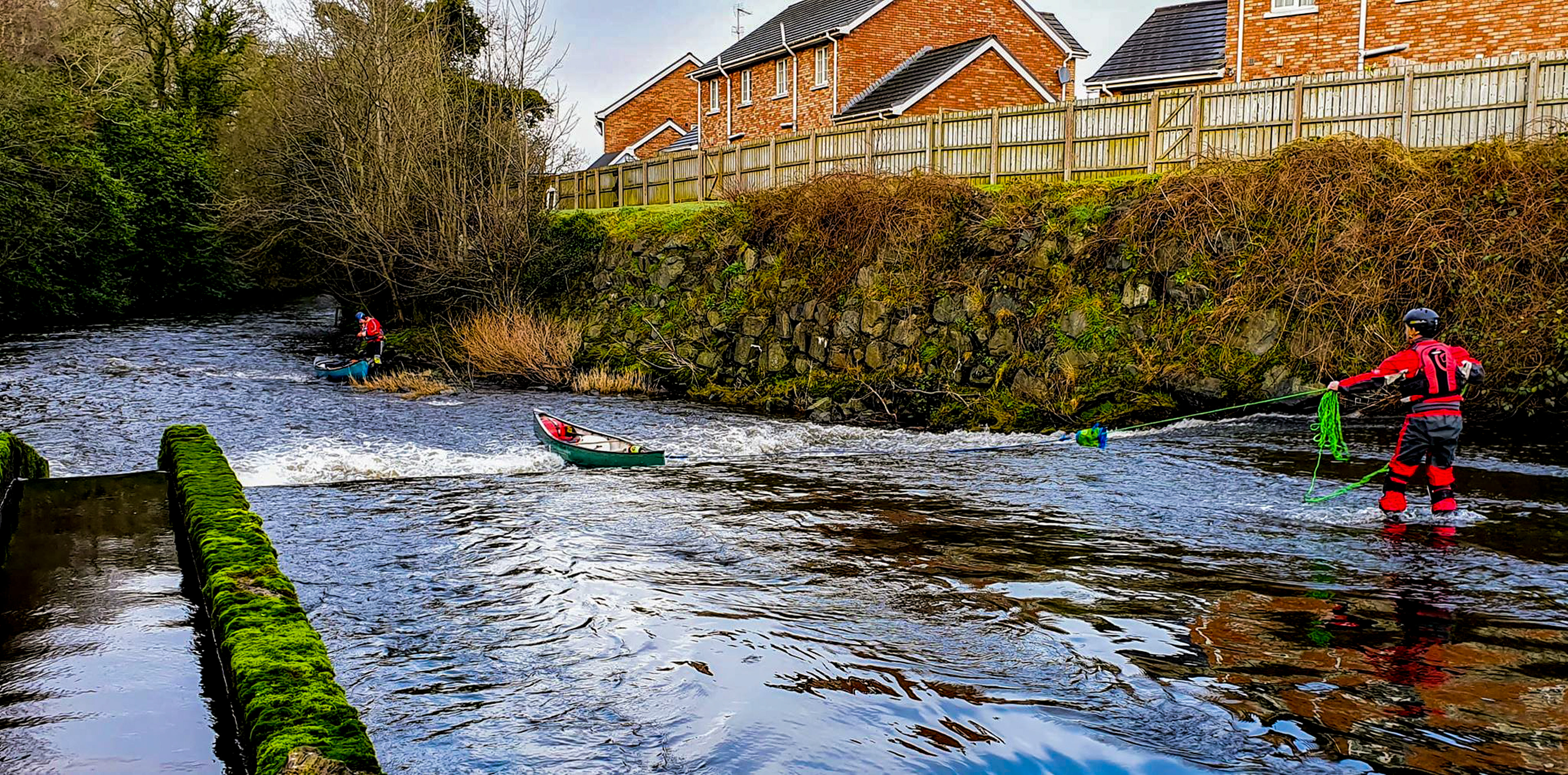
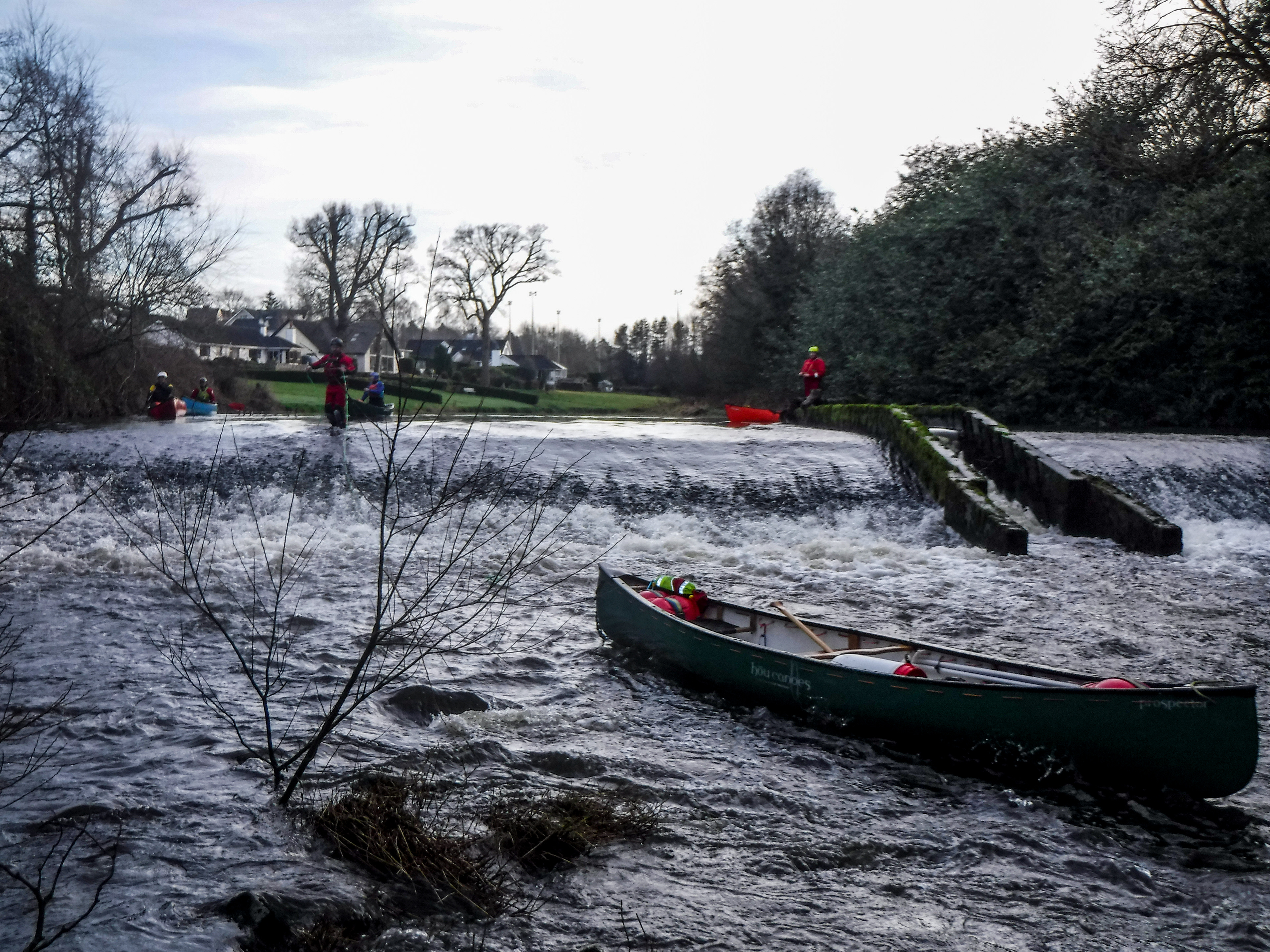
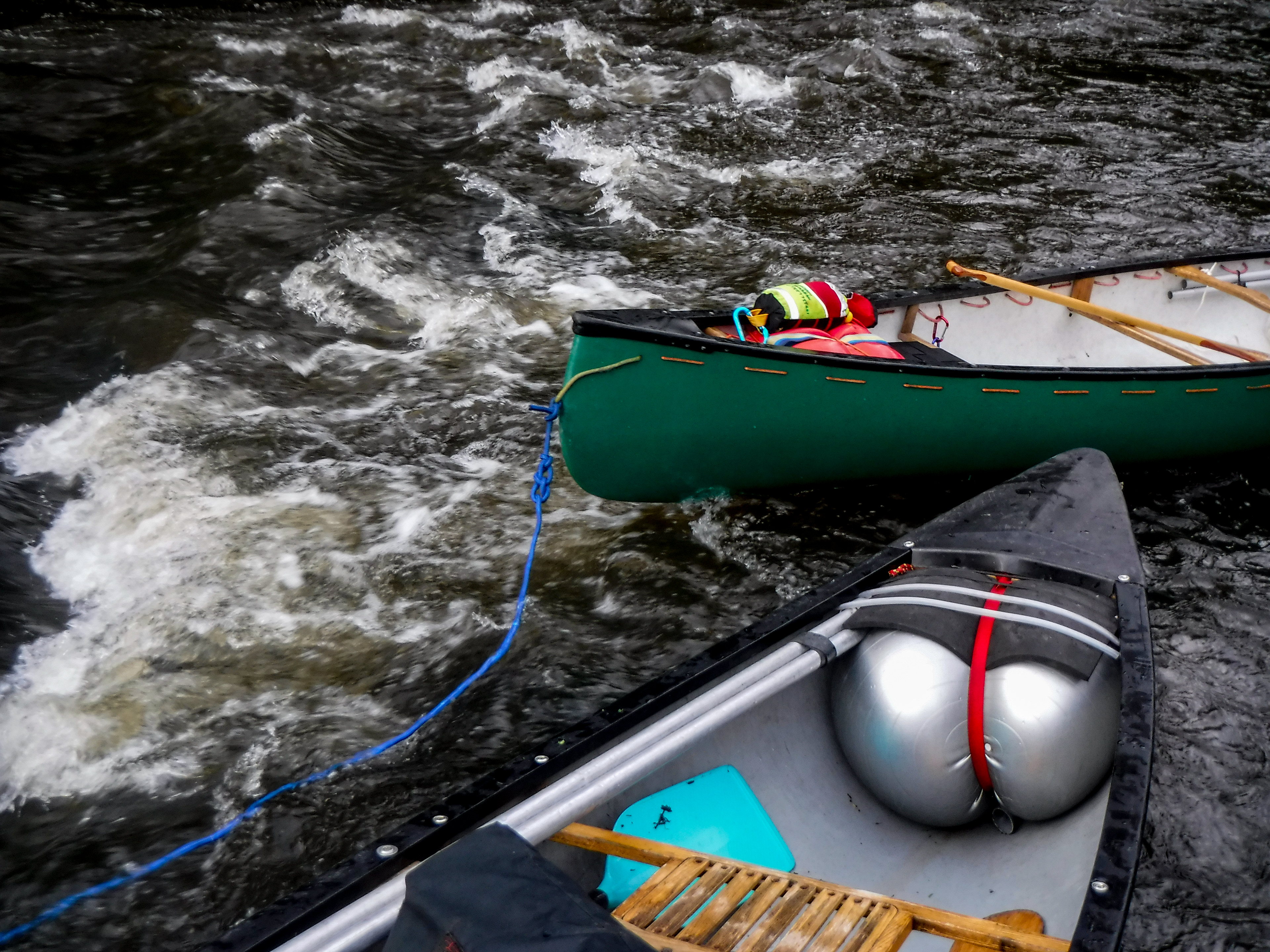
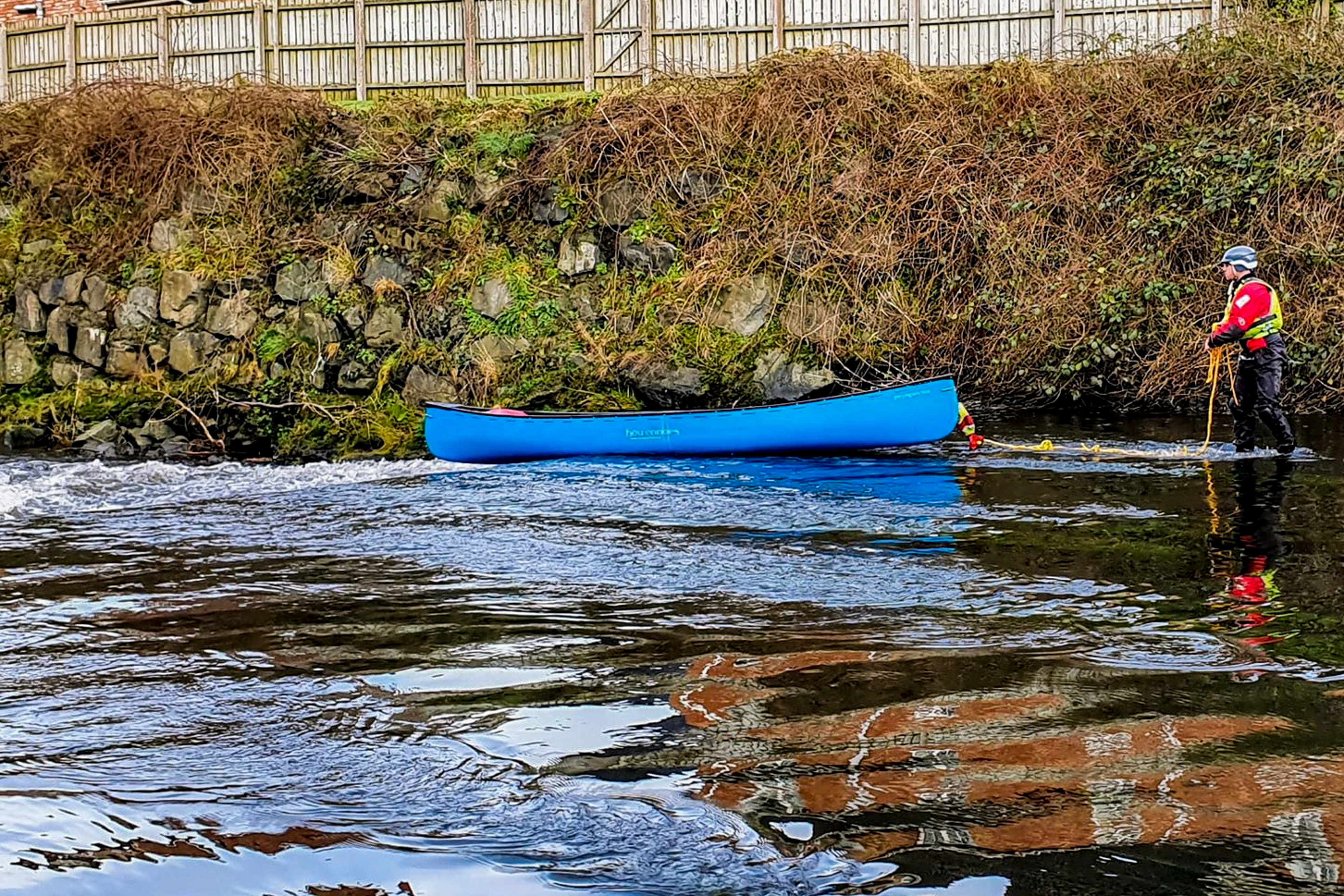
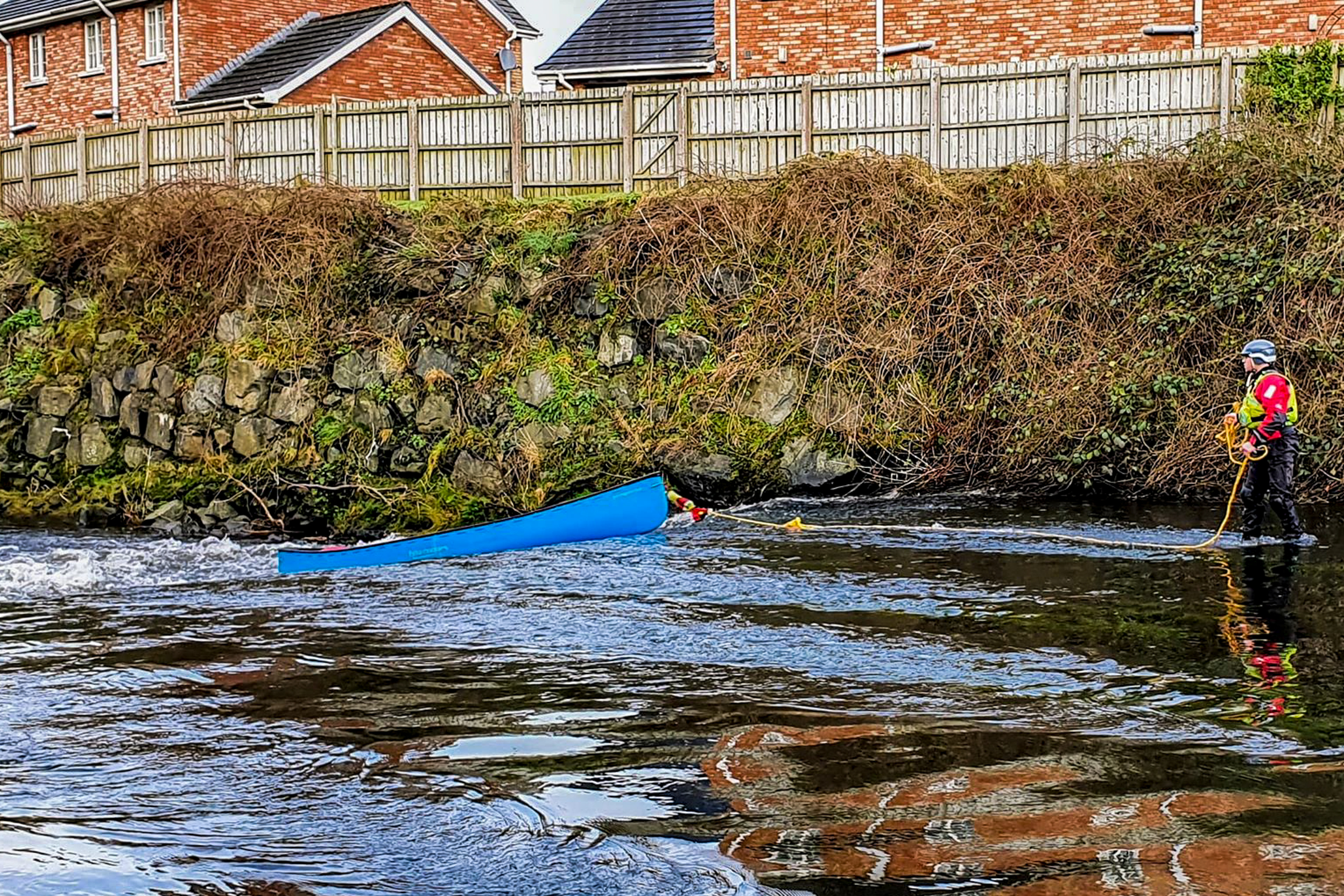
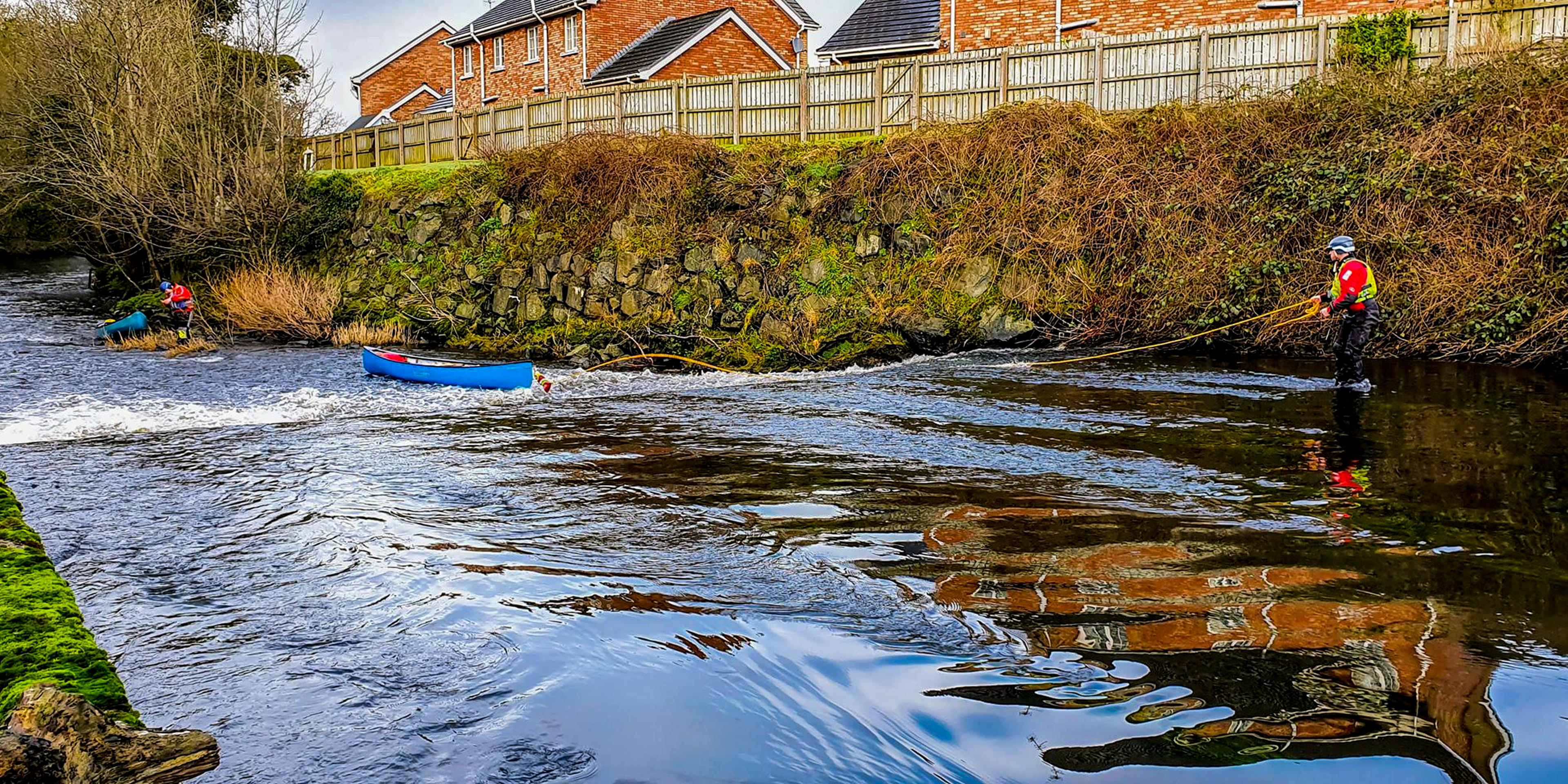
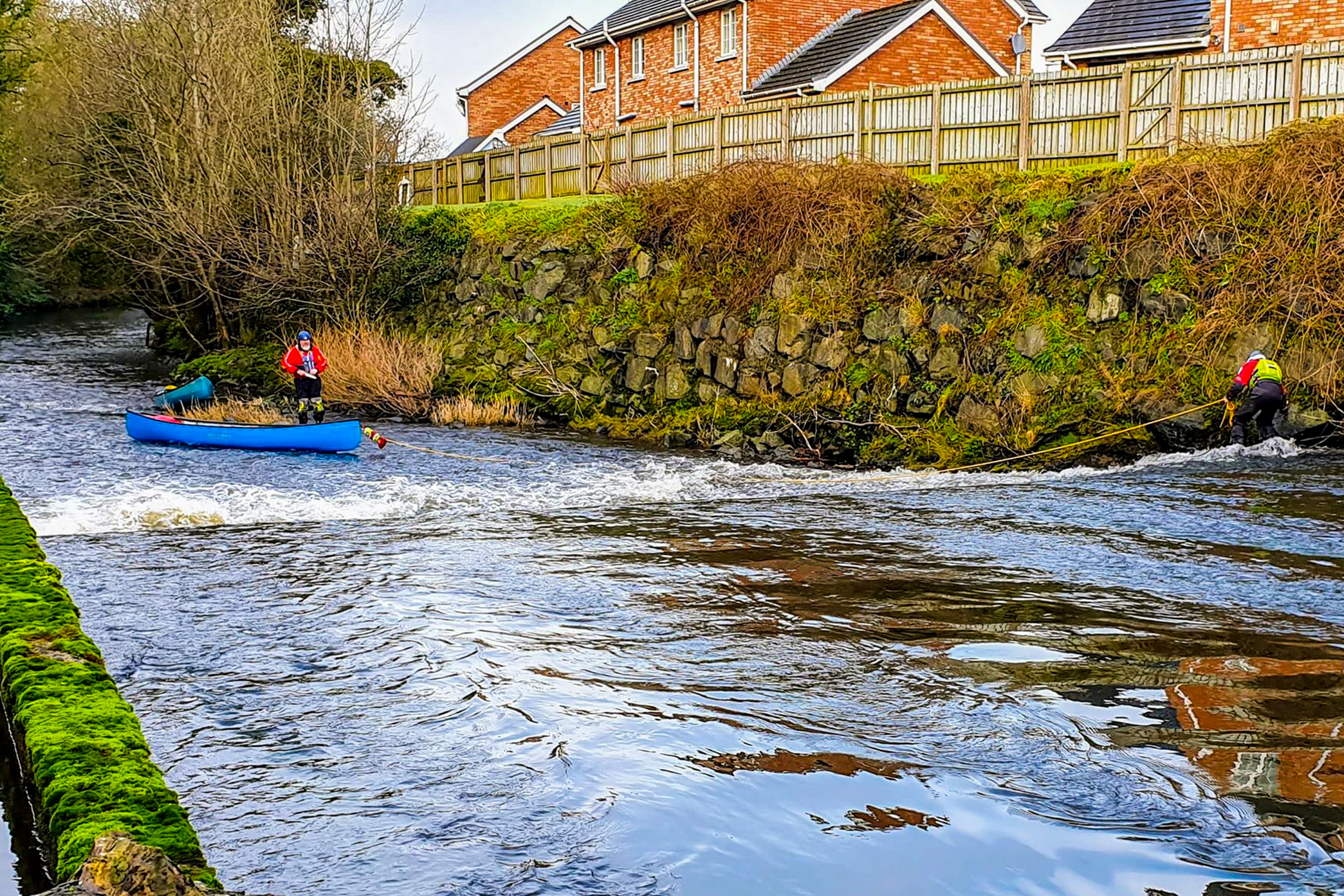
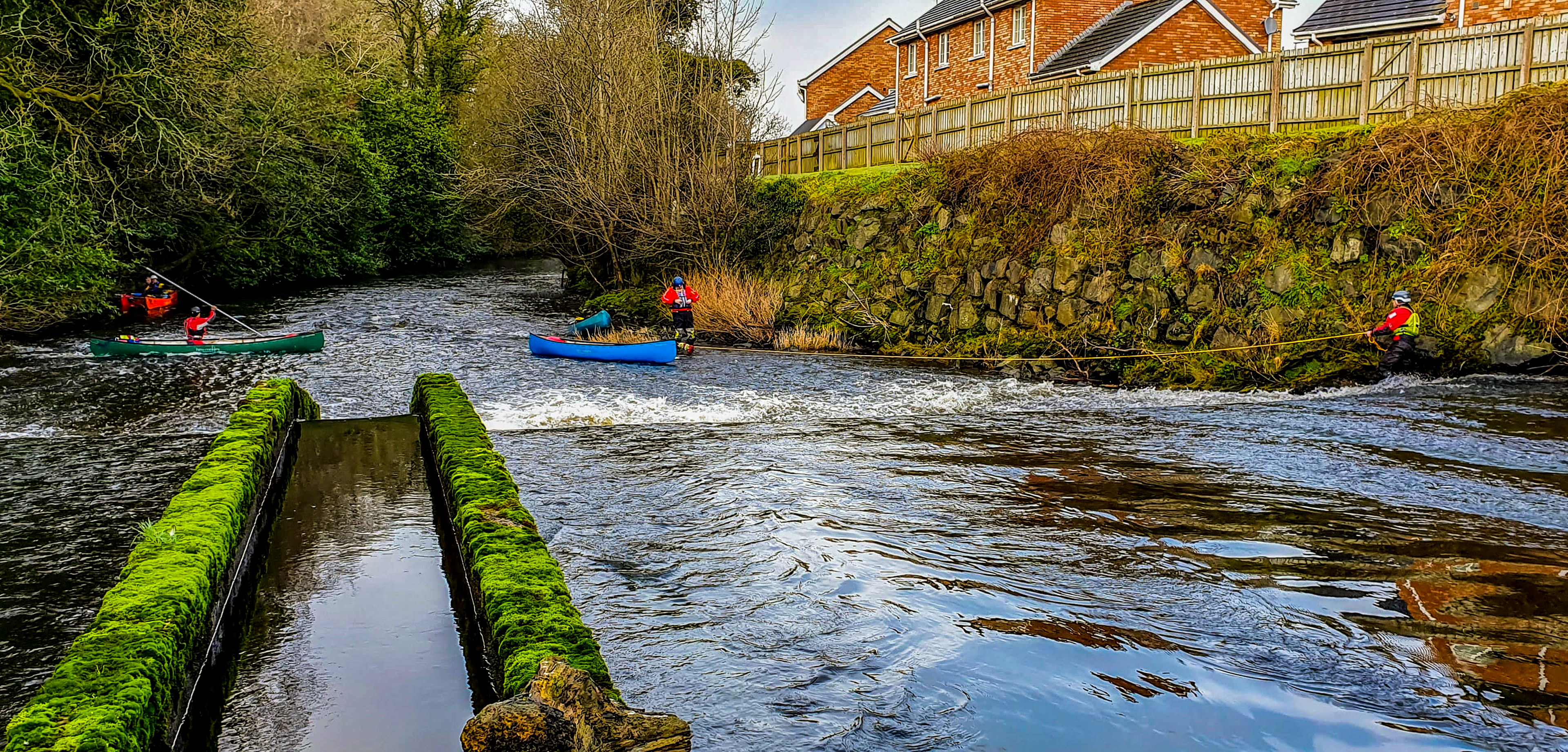
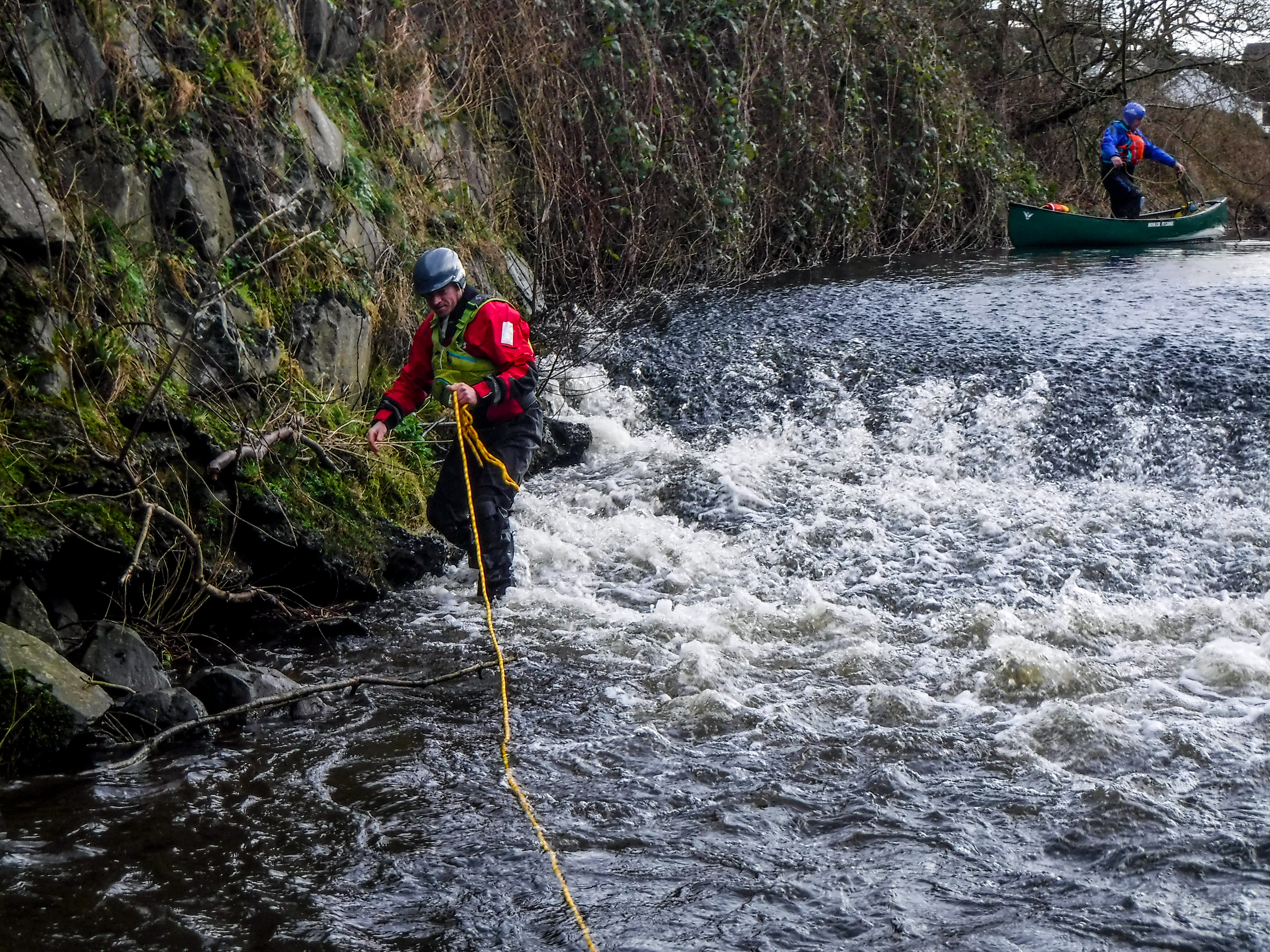
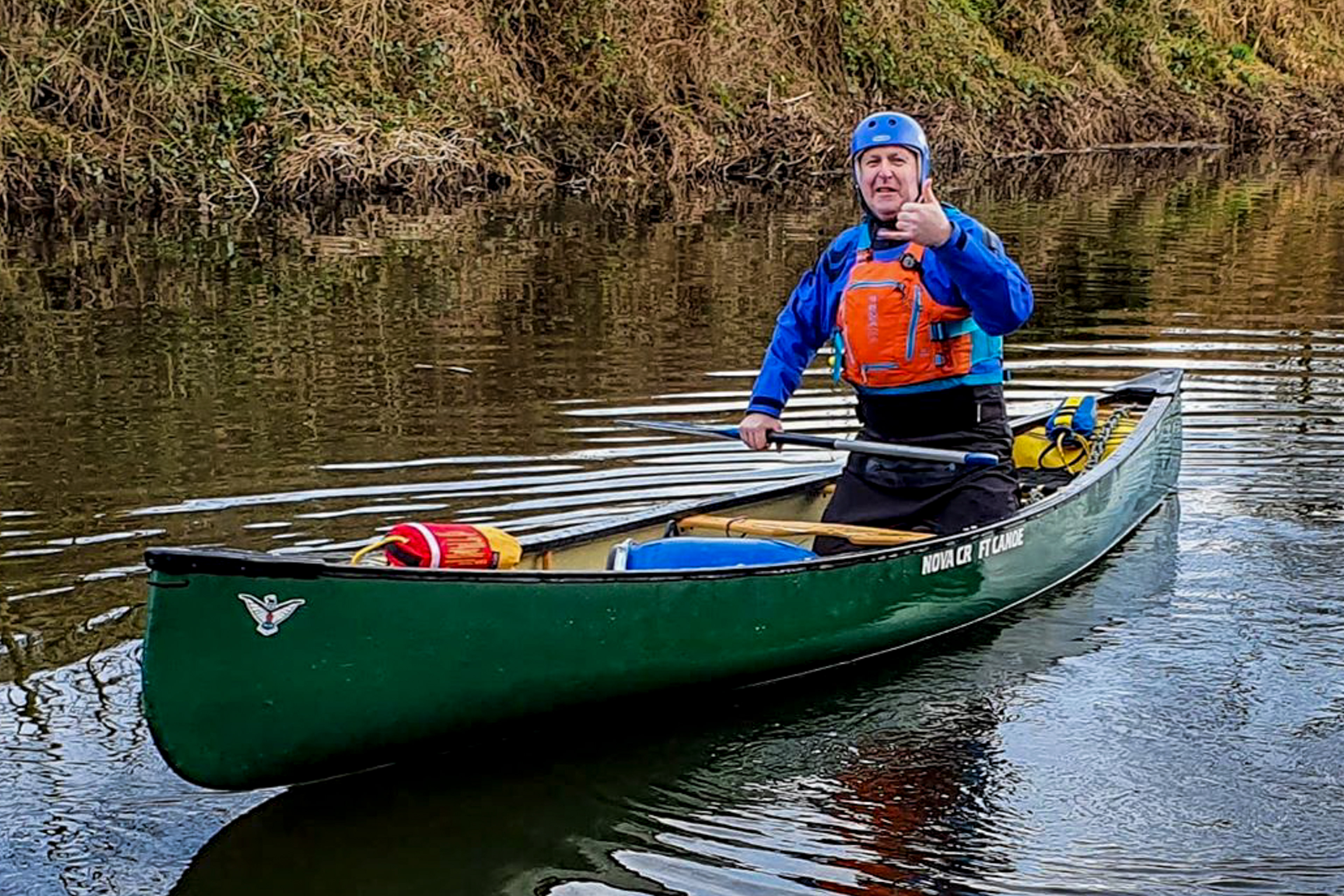
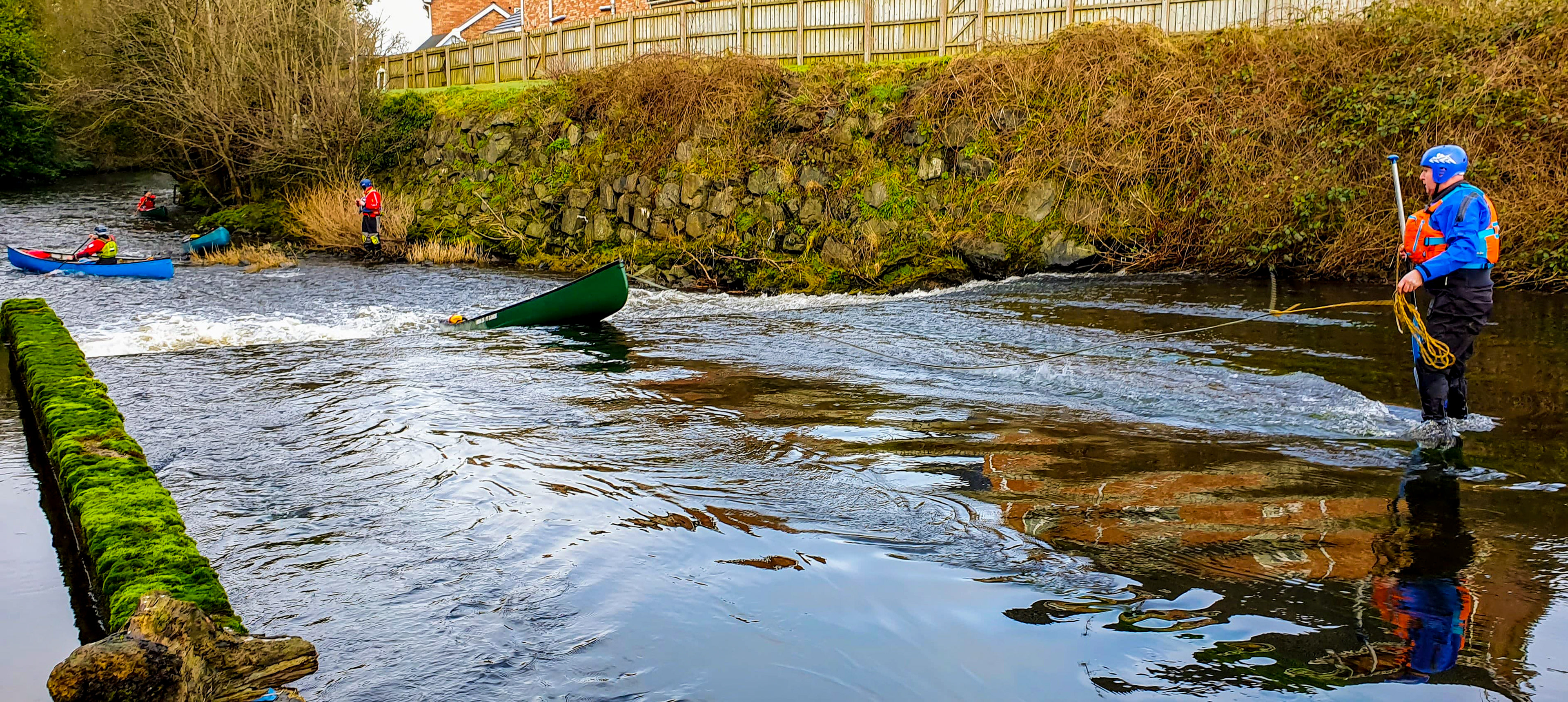
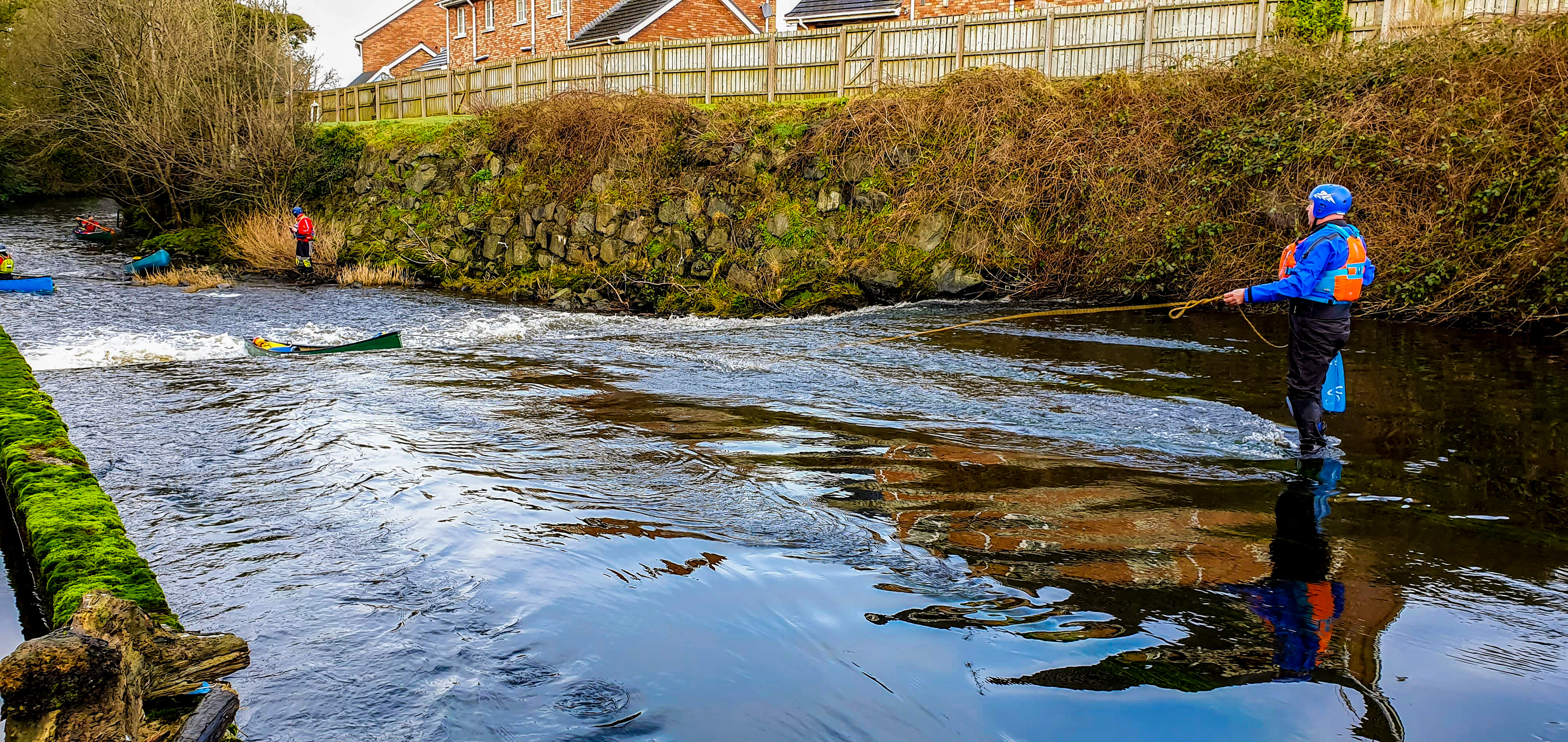
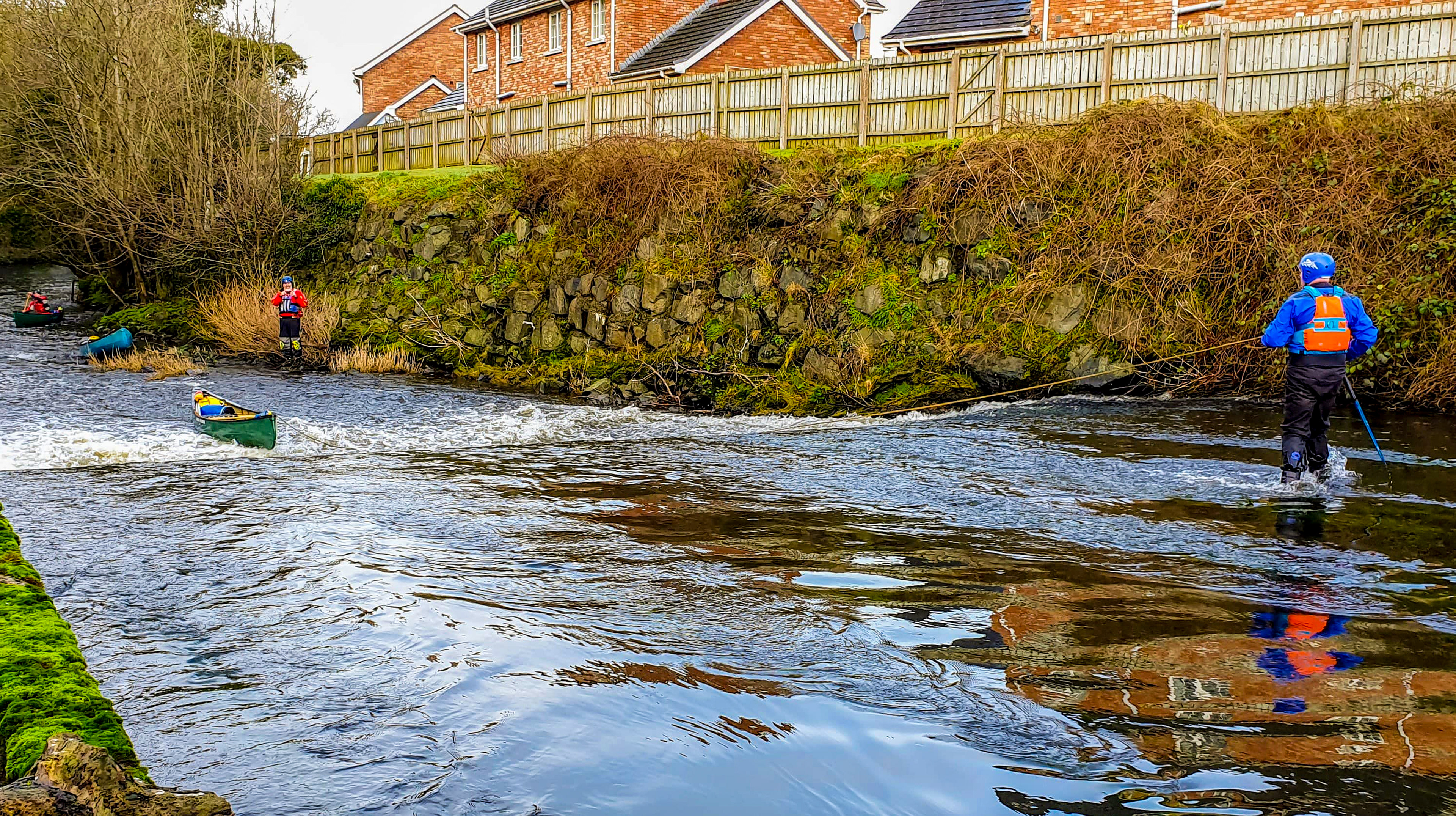
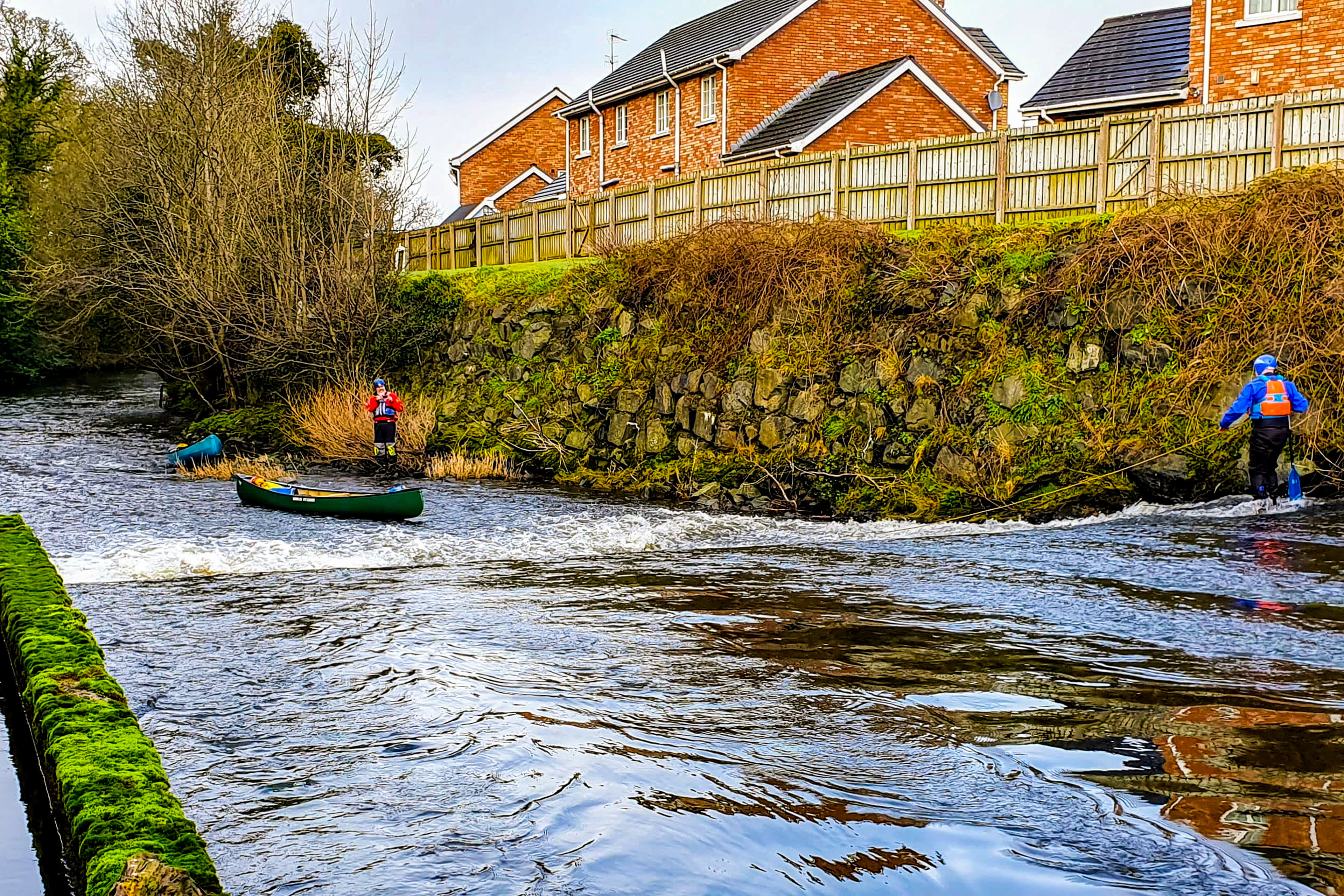
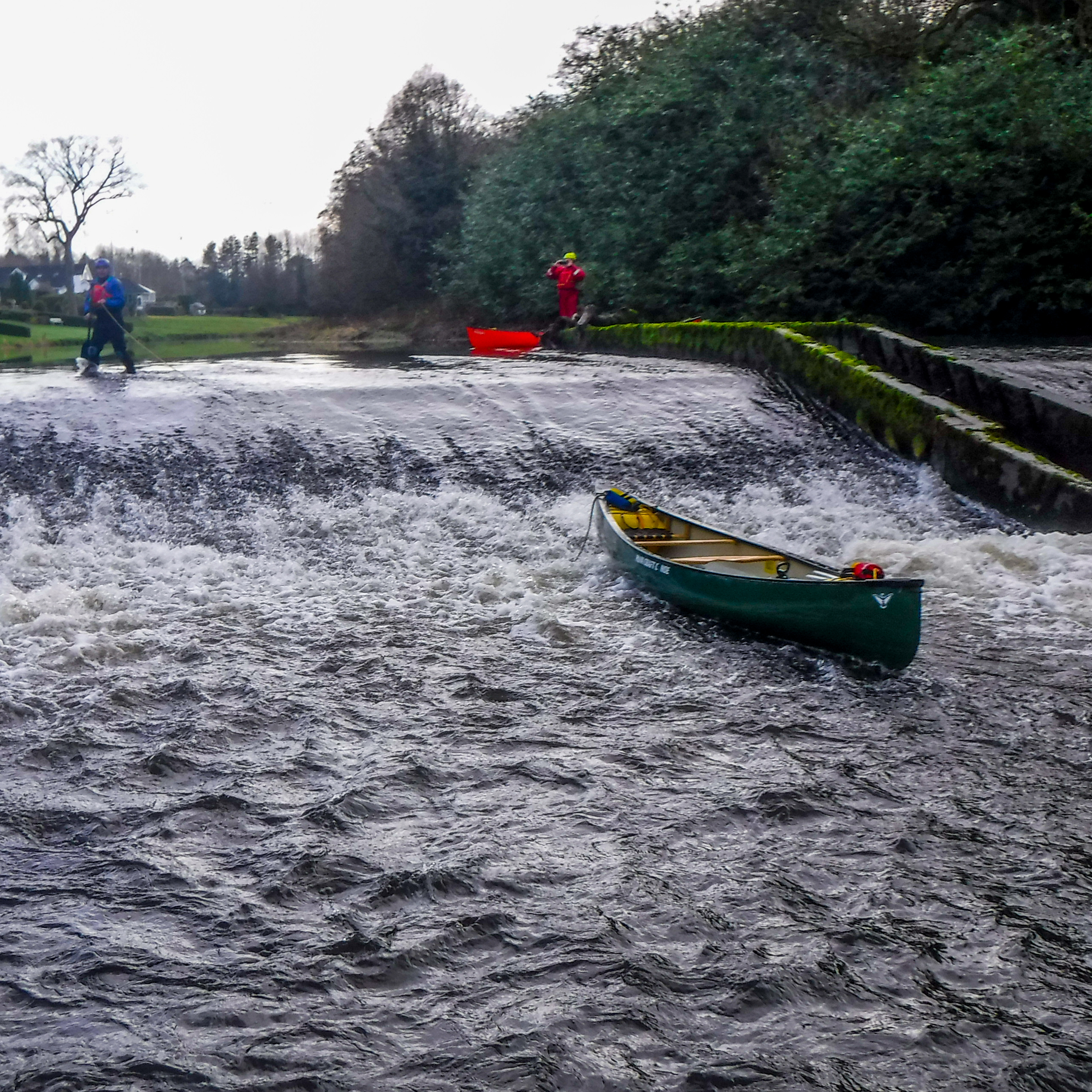
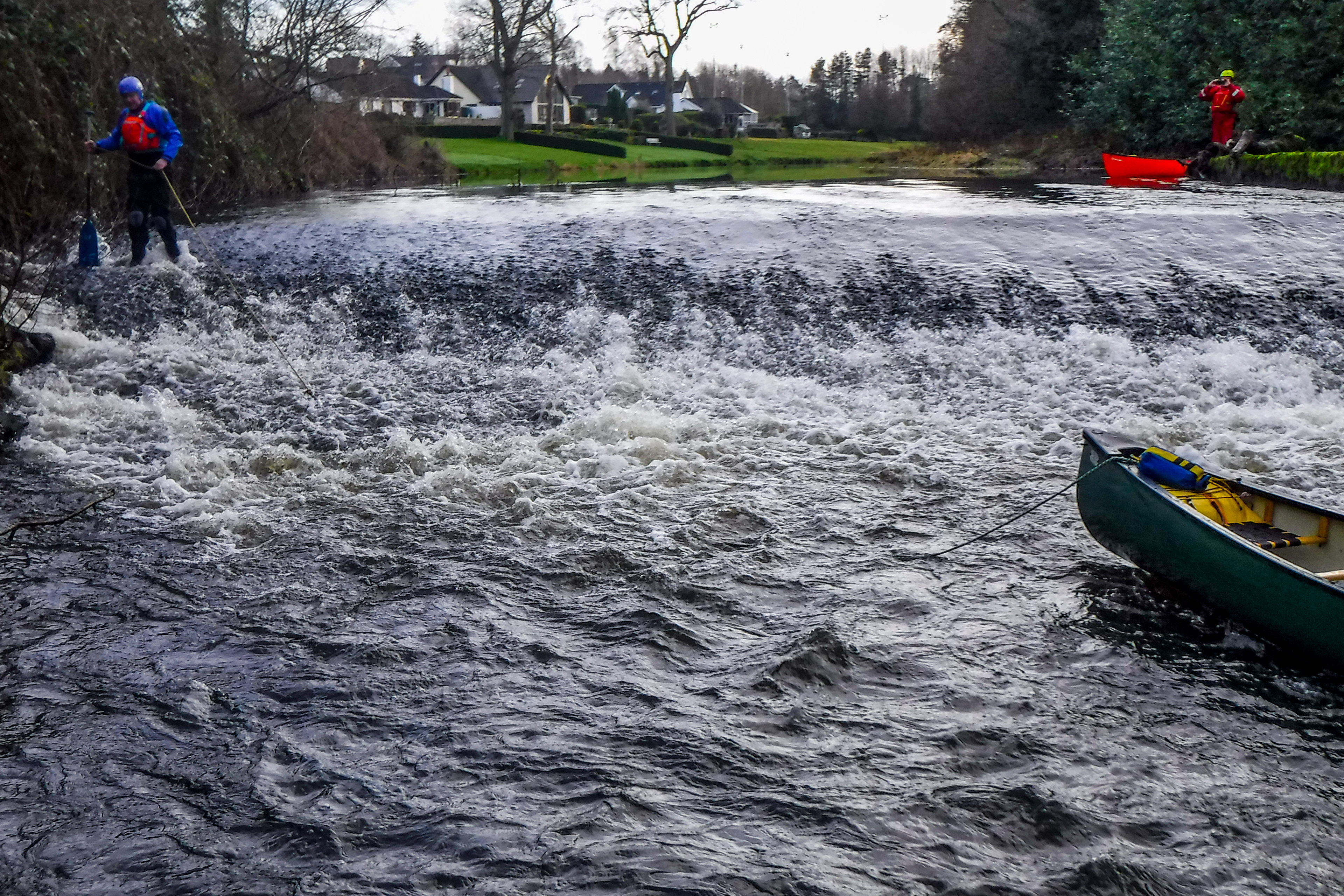
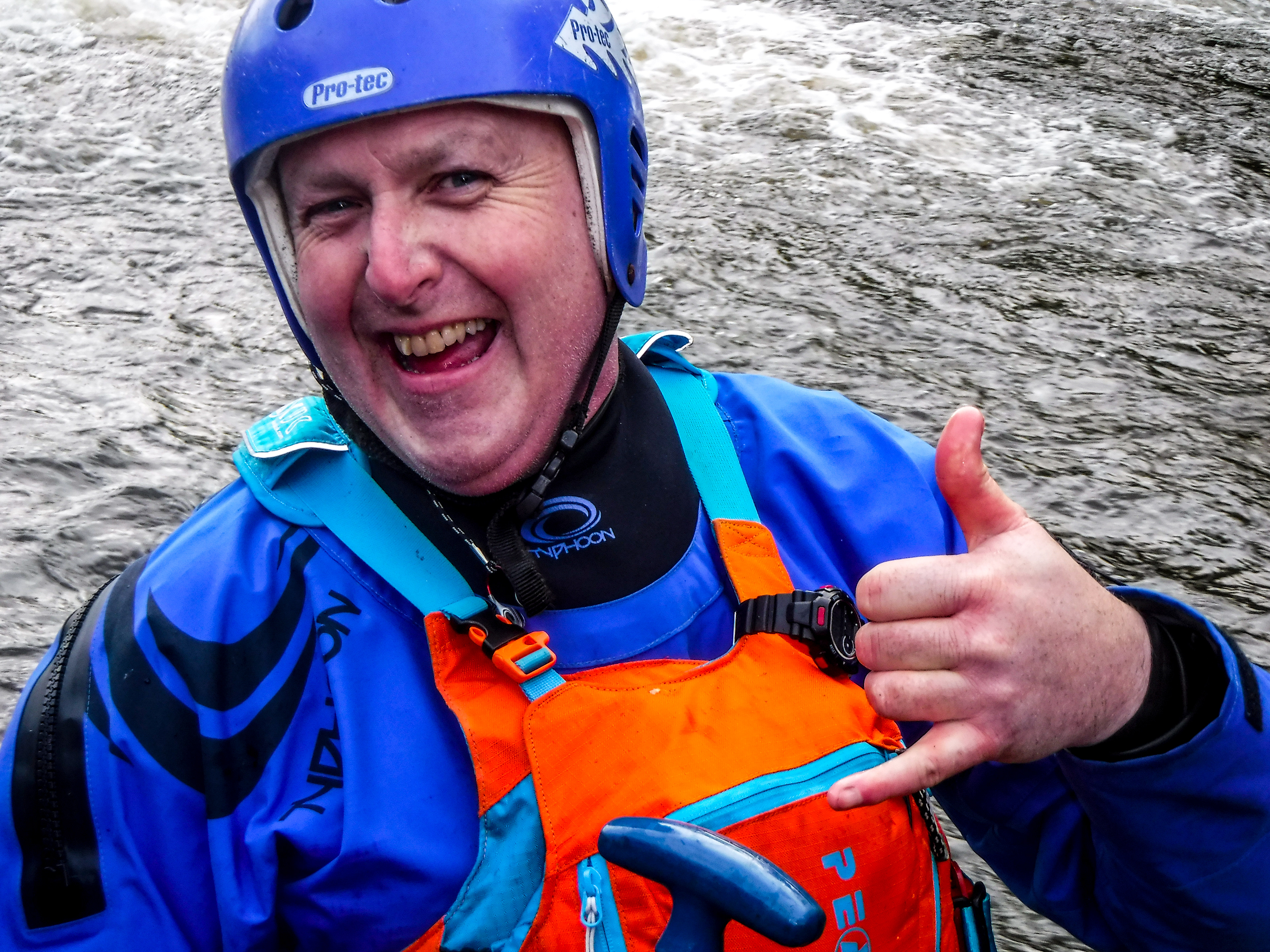
Group 4: Time to move on down the river. A bumpy ride for Colin as he decides to run the weir as he was nursing a sore foot and walking down the weir put his foot at risk. This group of photos mainly just show us doing the things you try to avoid, running through a gap or small drop backwards. While there was no intimidation here at all, it did challenge a bit as most paddlers never practice going backwards. The question remains then, what do you do in bigger water when it go pear shape and you find yourself hurdling down the rapid backwards and you have never practice what that is like. This exercise was just to drop the penny and get the group to start thinking, "what if".

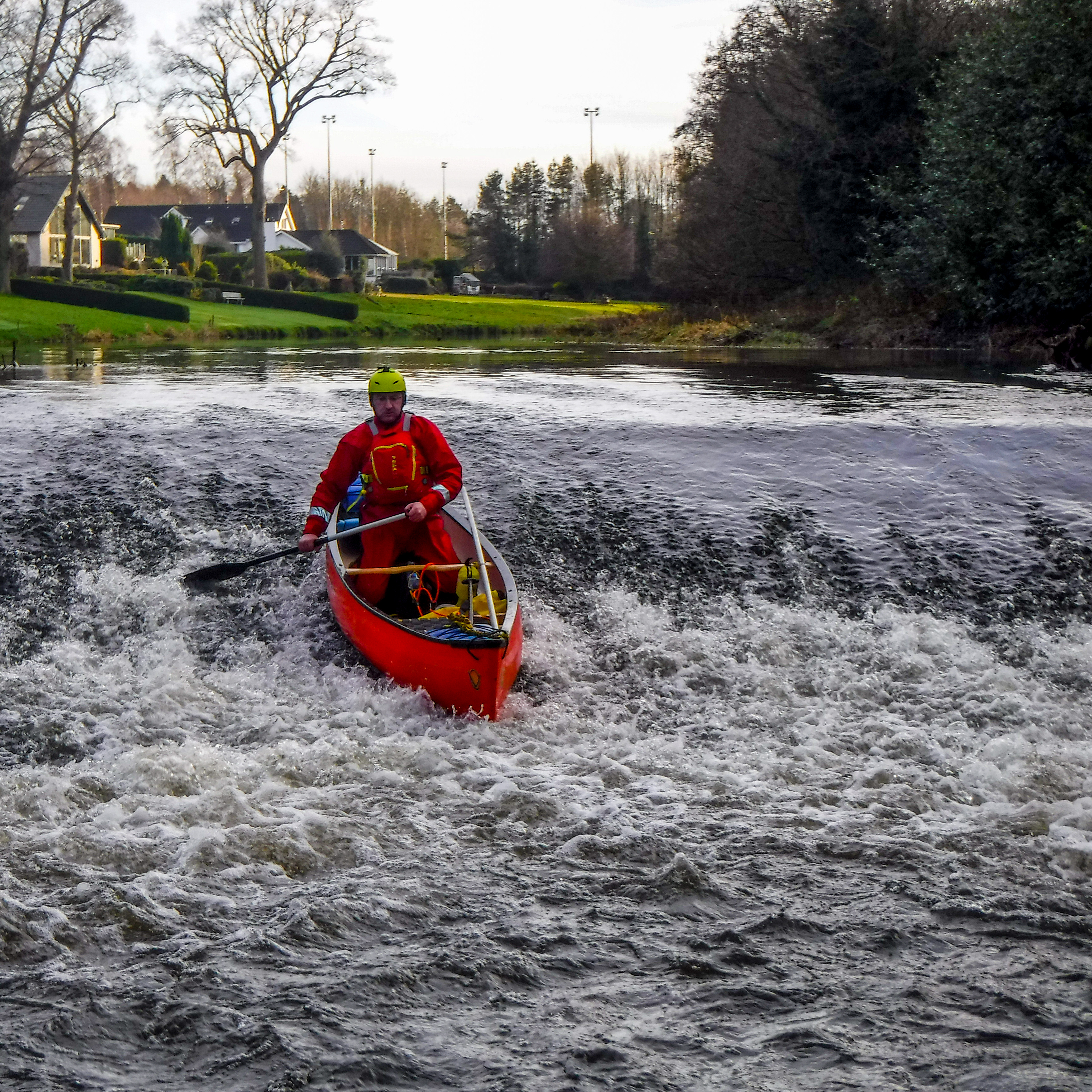
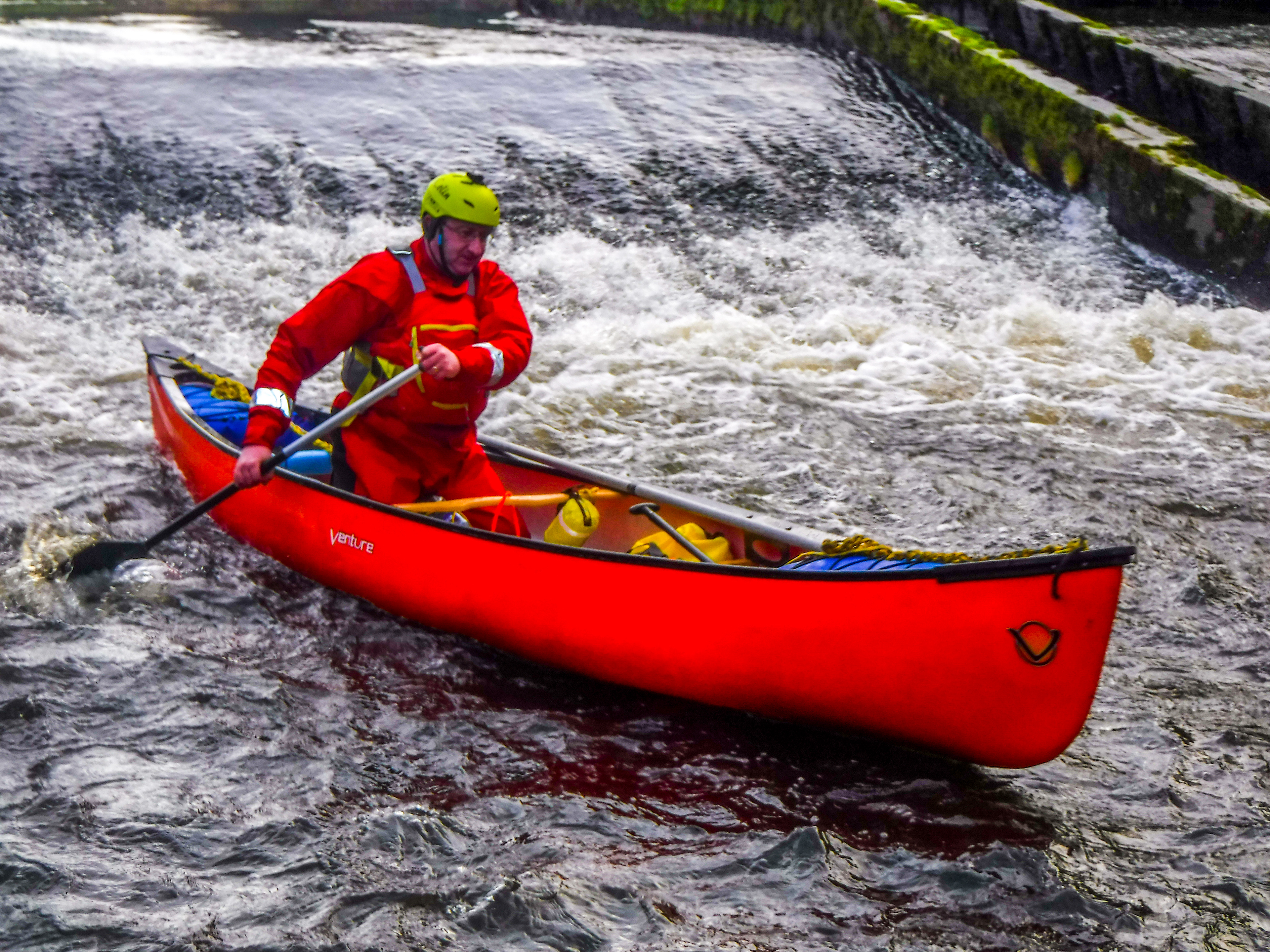
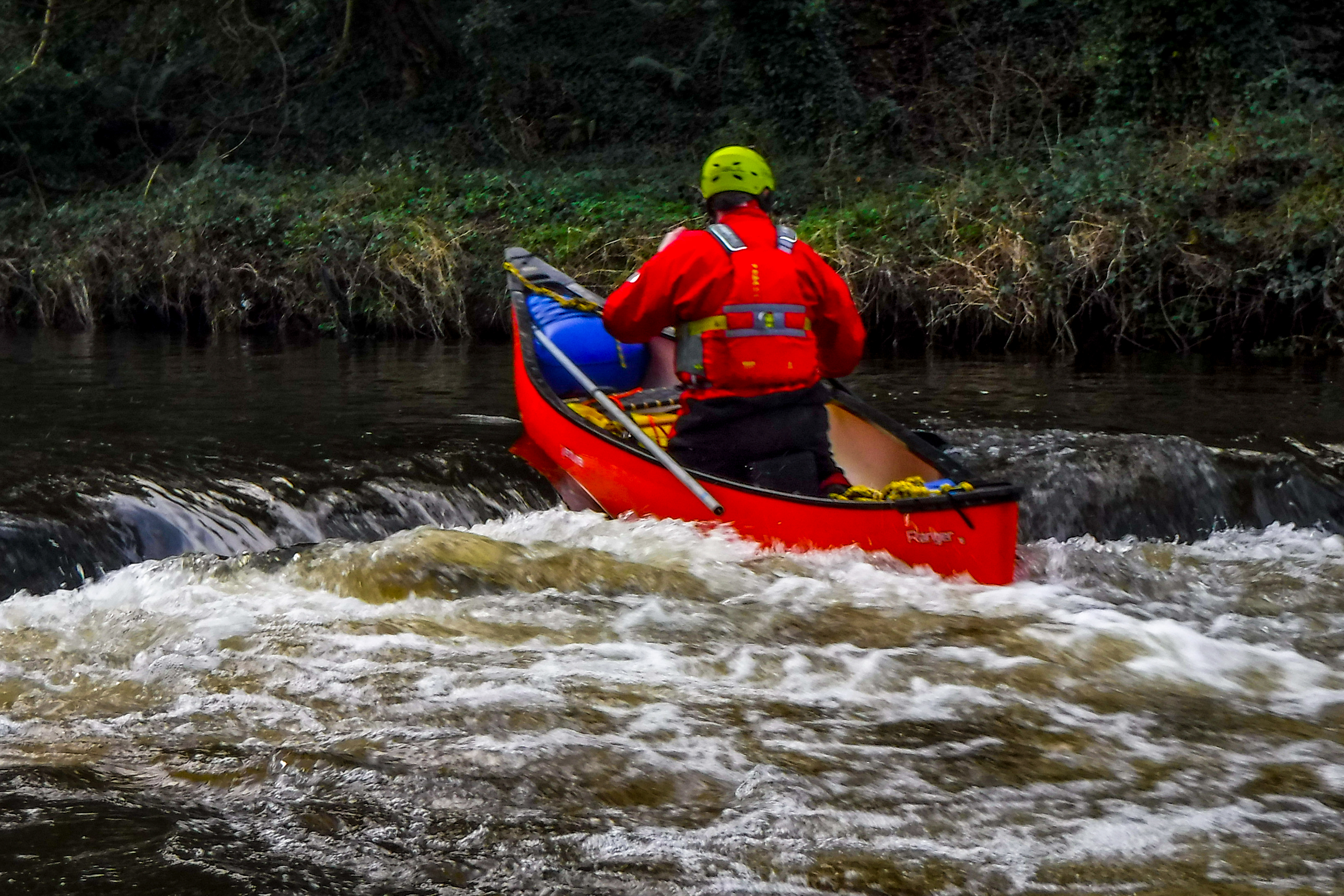
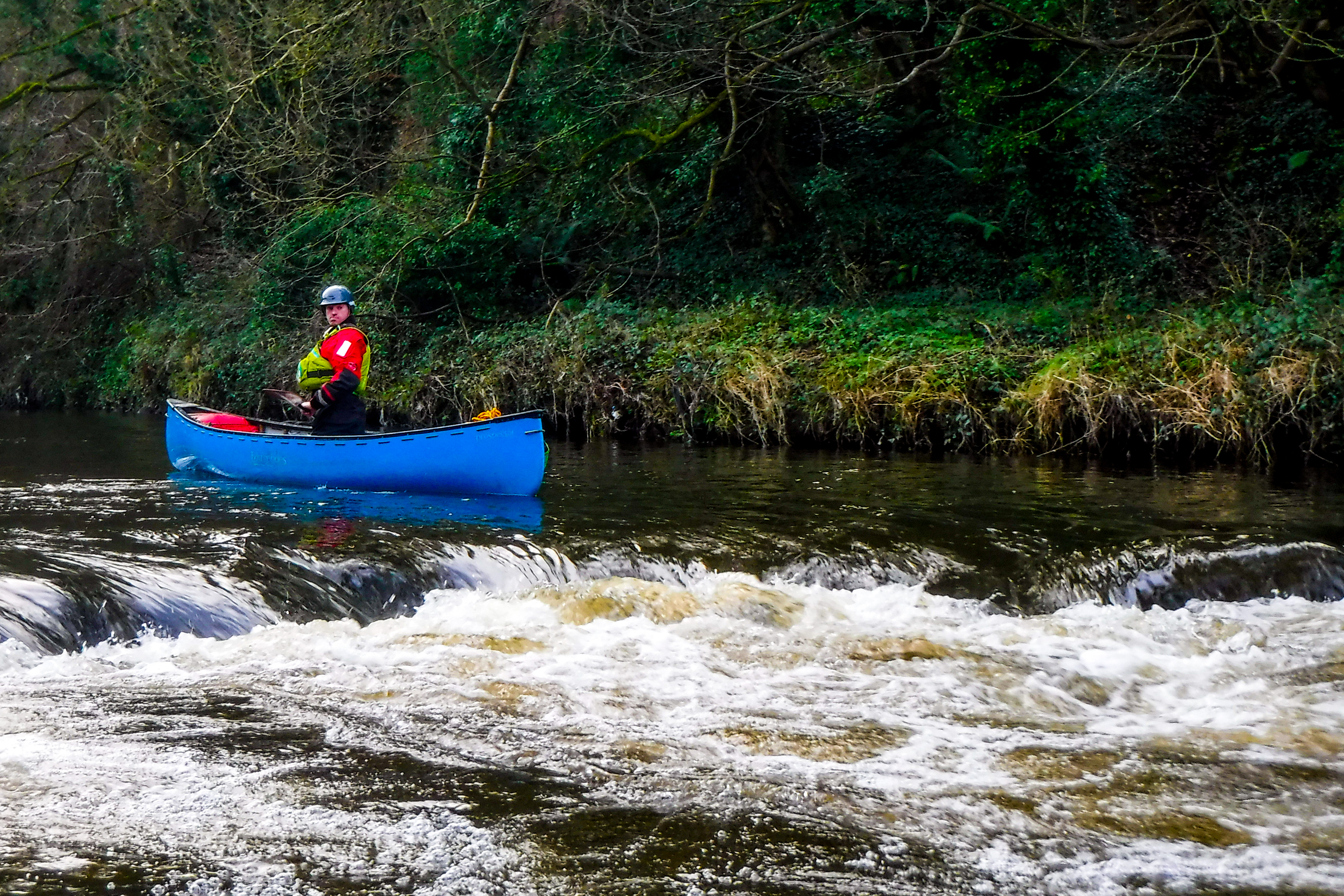

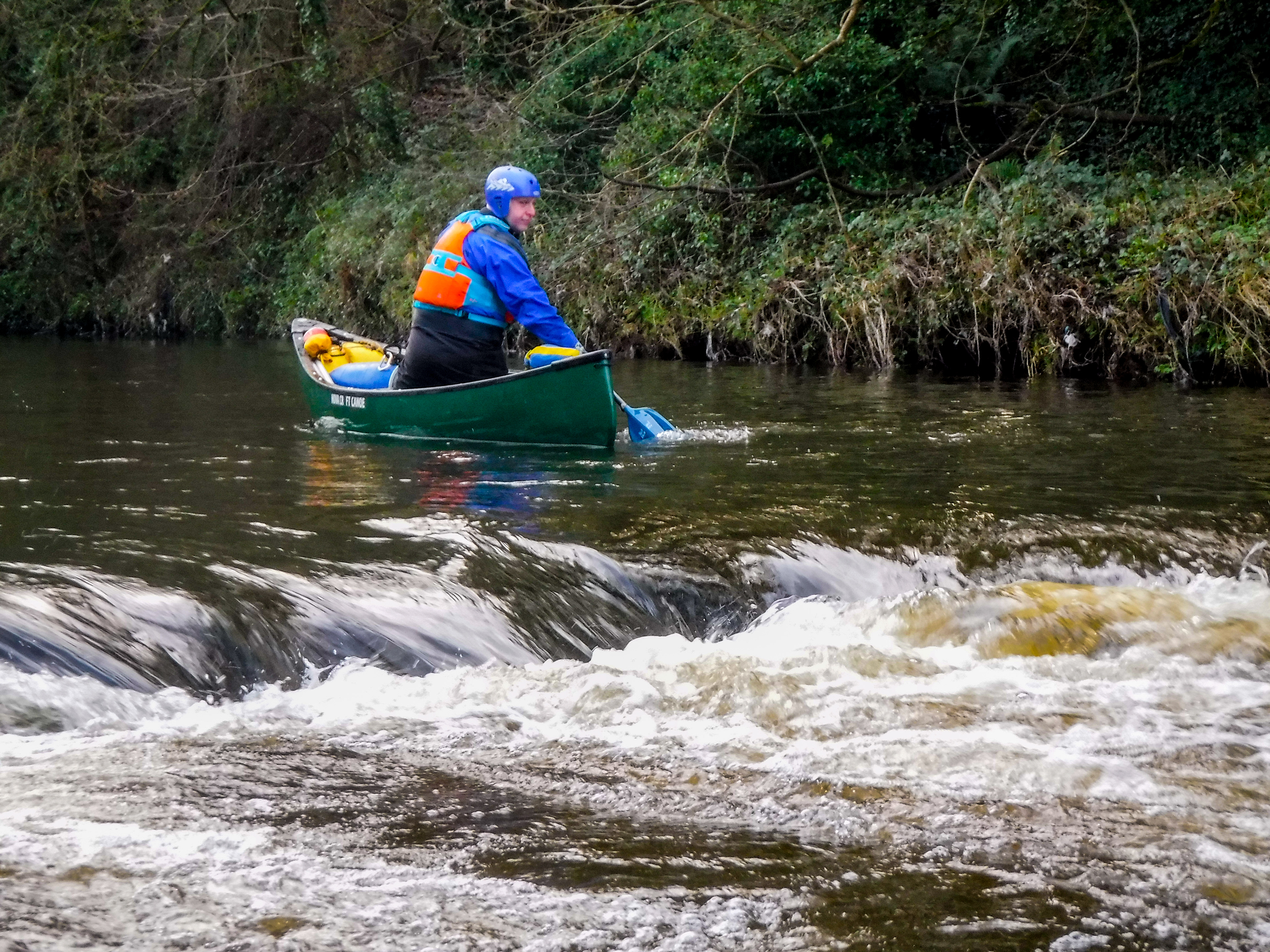
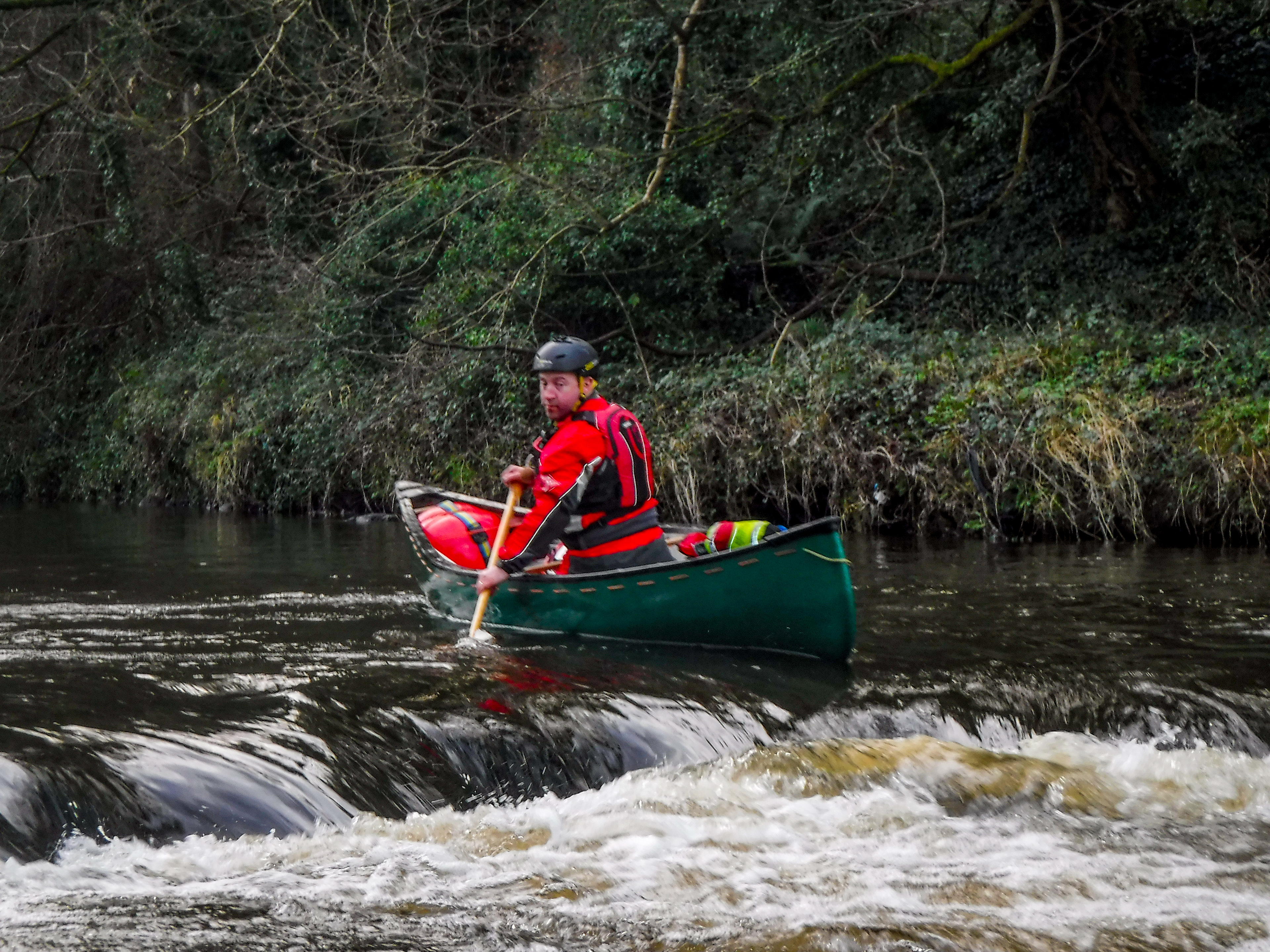
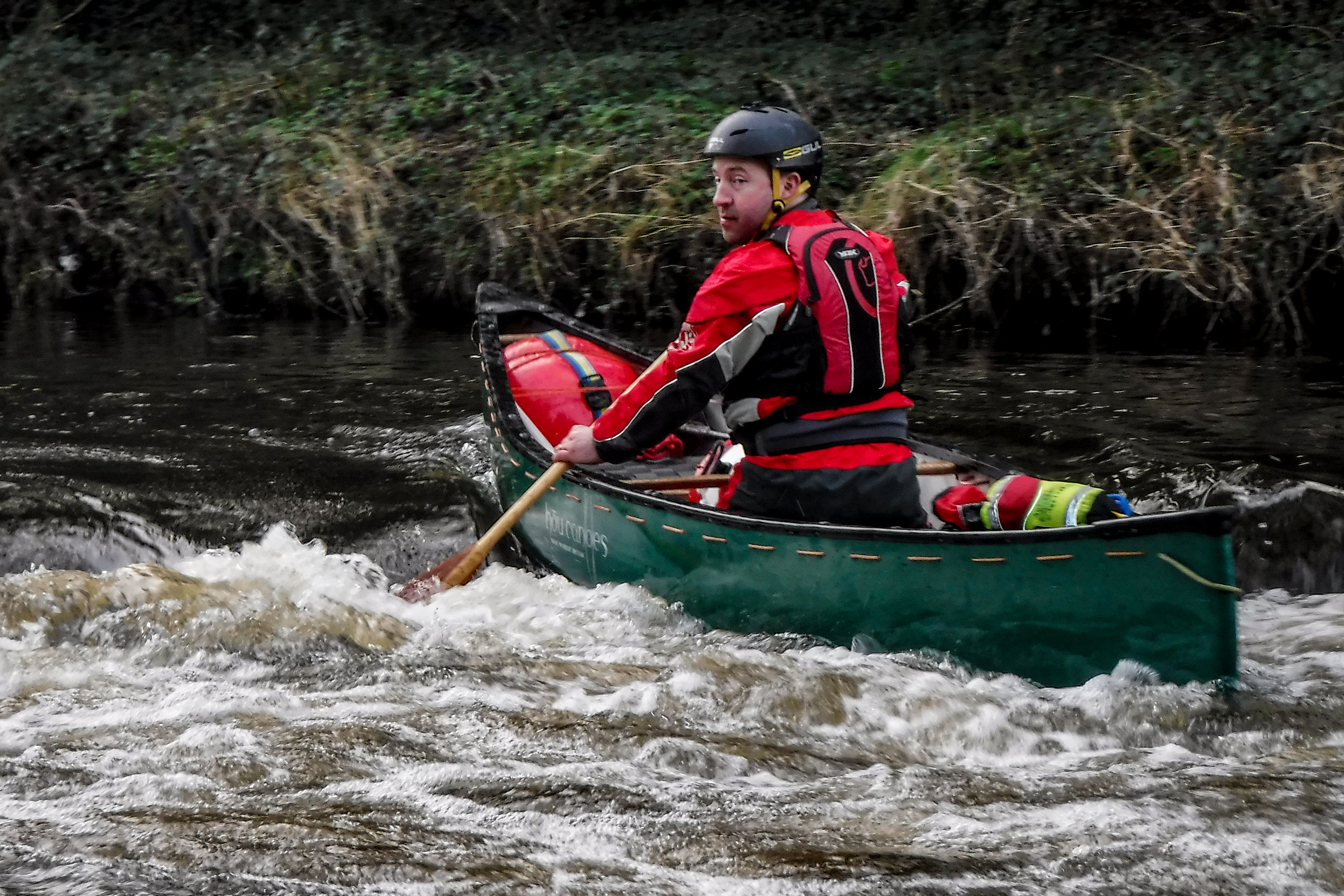

Group 5: The final fun of the day before the hard work of getting the boats and kit off the river and up to the road. Snubbing! When using poles on the river, downsteam is called snubbing. Going upstream is called poling. Snubbing means using the pole ahead of the boat to catch on a rock so you can slow the boat down, snub the rock, or snub the energy out of the decent keeping the boat slow and controllable; you can see me doing that in photo 1. Either way it's a very skilful set of skills when exploited fully. This was just an introductions to snubbing and some poling. However, poling is a great method for looking at the fundamentals of paddlesport: Posture & positions, connectivity, power transfer and sensory feedback from the boat.
Well if you came this far with me thanks for reading and looking at our photos. It was a great day mainly because I was out with great people, that's what you find when paddling.
If you or you club or group need any coaching, scroll up to the top and use the "contact me" section. Thanks. Hugo.
